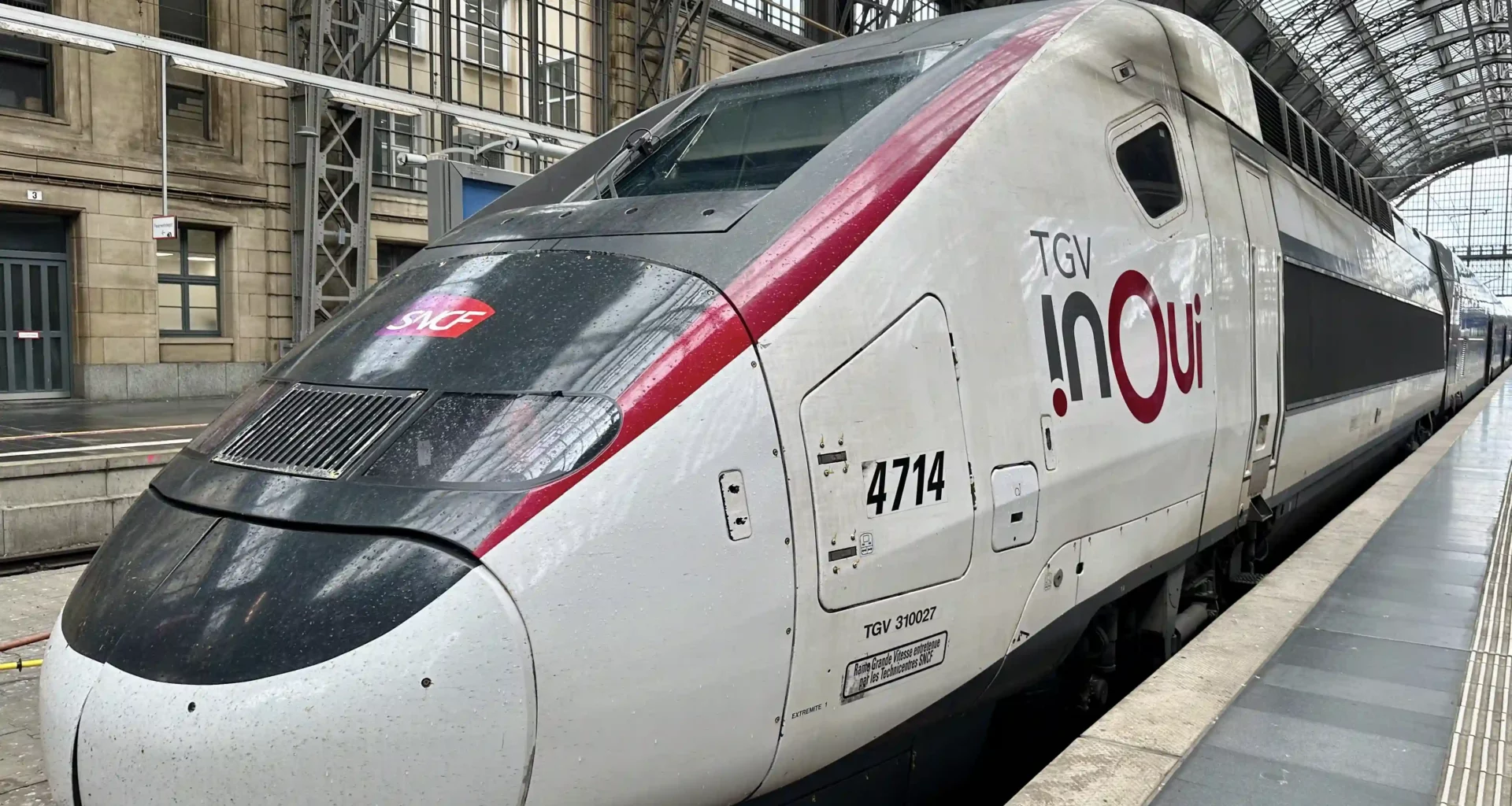Though I typically like to write about air travel and hotels, occasionally I’ll review other forms of transportation, especially when they’re more convenient and comfortable than air travel options. Trains are a great example of that, especially in Europe, where it’s oftentimes far more comfortable to take a train than a flight–just this year, I’ve reviewed Germany’s high-speed ICE trains in first class, as well as Eurostar’s Premier Class offering between Paris and London.
On a recent trip to visit my sister, I took France’s high-speed double-decker TGV Duplex from Frankfurt to Paris in first class. The journey was a mixed bag. On the one hand, my seat was comfortable and the views were wonderful. On the other hand, wi-fi was spotty to nonexistent, the cabin was dated and dirty, and power outlets weren’t working. Though it was still more convenient than a flight, I expected more for the price I paid.
Booking
I booked my TGV first class ticket on the Trainline app for $123. I booked the “Super Sparpreis Europa” first class ticket, which is the cheapest level and is non-exchangeable and non-refundable. Though there’s not a huge difference between seats in first and second class, this ticket was only $15 more than a second class ticket, which I think is a reasonable price for the extra room.
I booked my TGV first class ticket on the Trainline app, which I highly recommend for any English speakers traveling by train throughout Europe and the UK: it’s speedy and super straightforward to use. My ticket details were as follows:
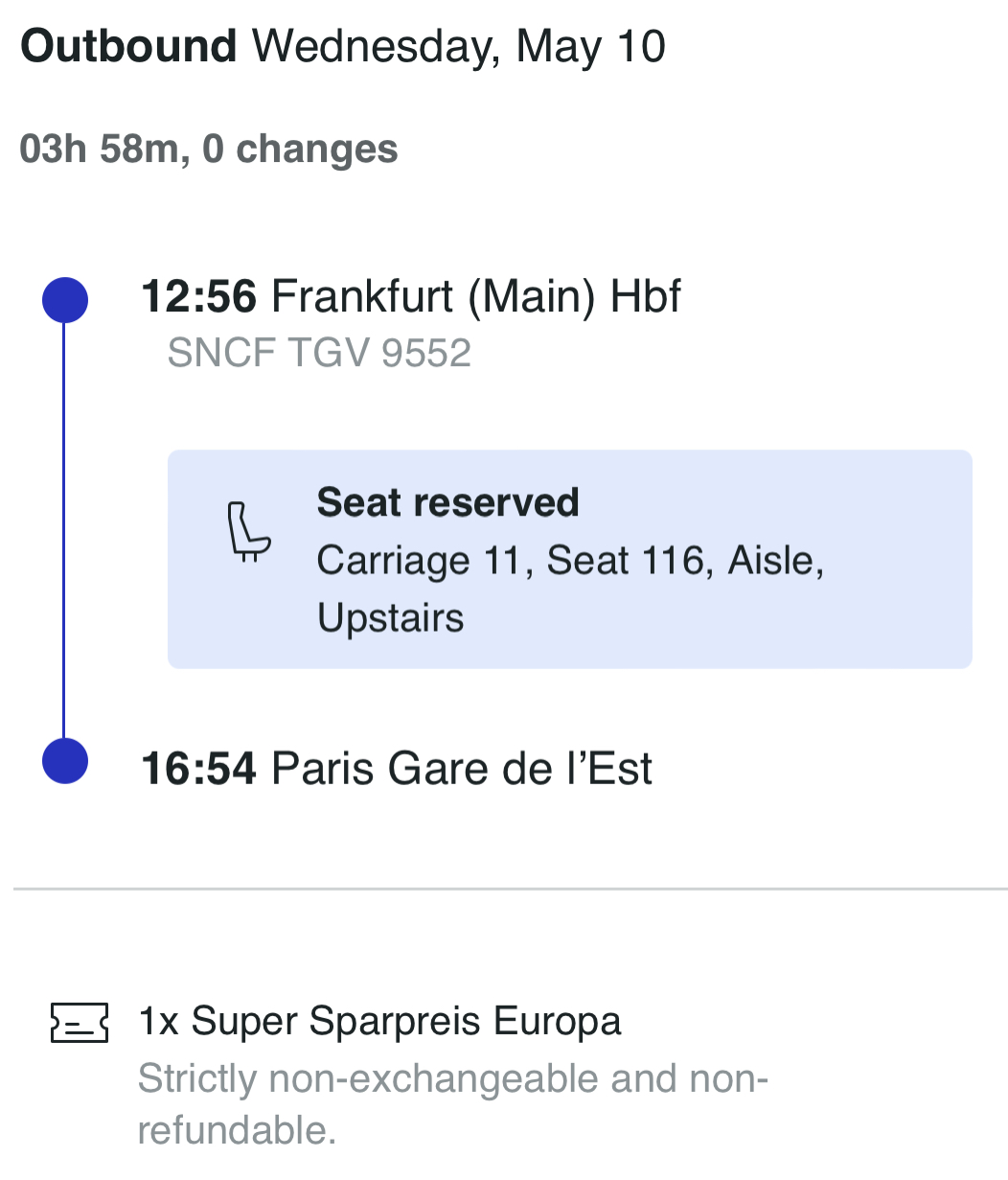
Frankfurt Central Station
I arrived at Frankfurt’s busy central train station around 12:30 PM, about 25 minutes before my 12:56 PM train.
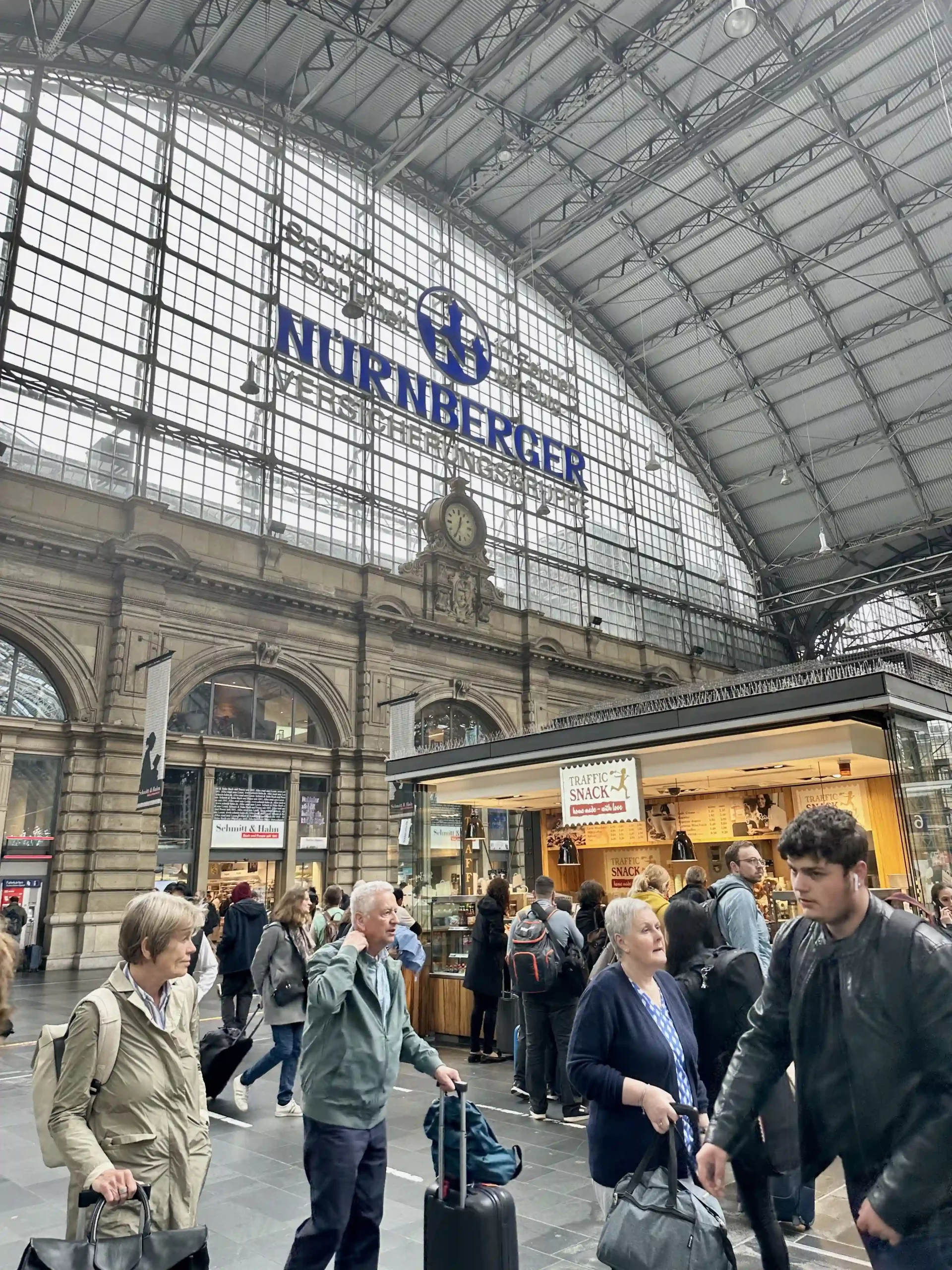
About 10 minutes after my arrival, our imposing, though dirty, TGV Duplex train approached Platform 2A.
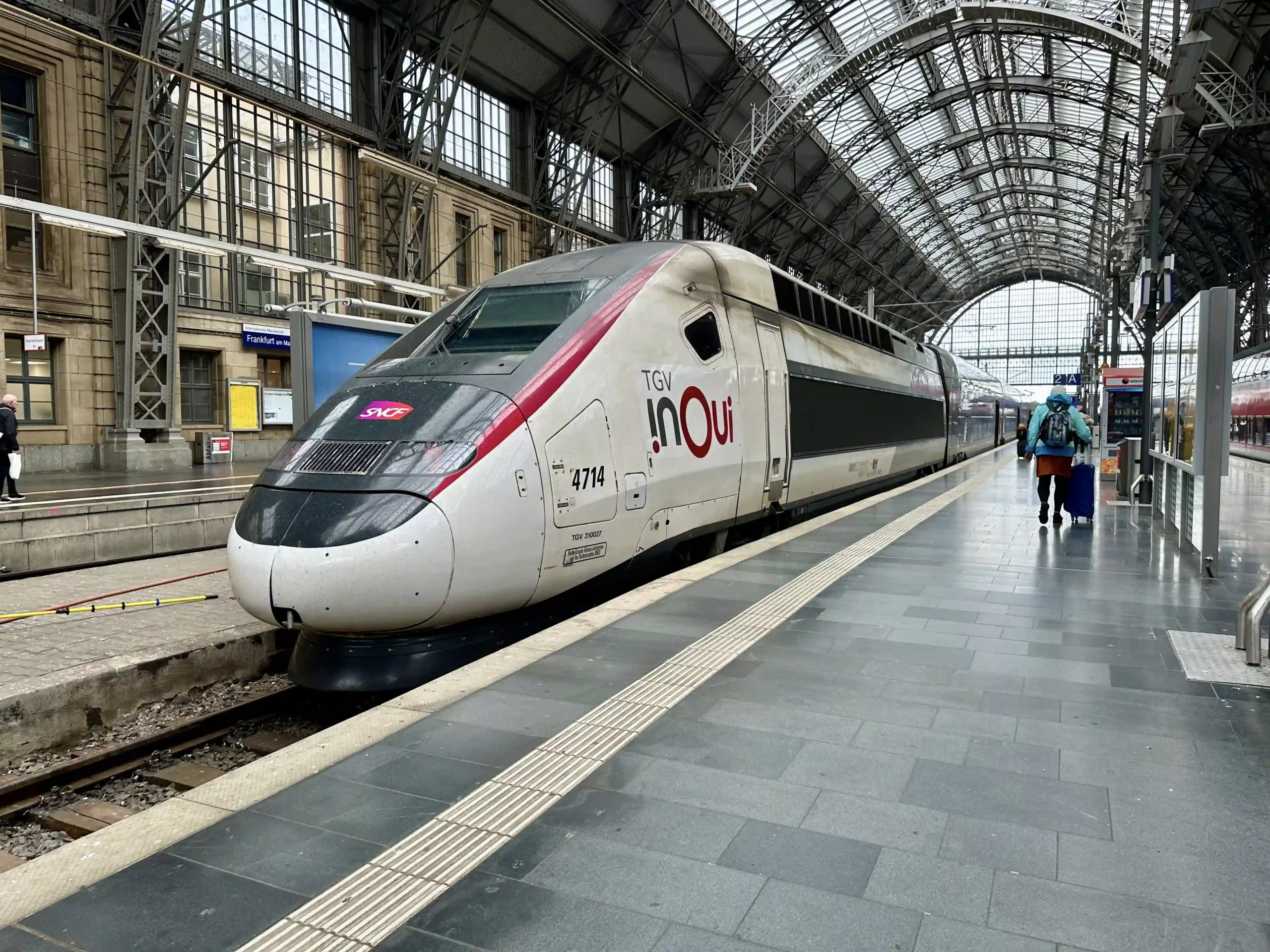
TGV Duplex trains
France’s national train company, SNCF, operates a lot of different types of trains across its many domestic and international routes. TGV—since 2017 marketed as inOui—refers to its highspeed trains, generally the most comfortable of SNCF’s offerings. Within the TGV category, there are multiple different trains, and for a comprehensive guide on those, you can read this helpful article.
For now, I just wanted to highlight that I rode on the second generation of the TGV’s double-decker Duplex trains. The newest, third generation TGV train is the Oceane, which was released in 2017 and features seats that swivel 180 degrees to face the direction of travel. If you’re interested, this article details how to check which train serves your route.
TGV first class seating
In total, there are 181 first class and 328 second class seats on this train. First class is spread across three carriages, each with two floors of seating.
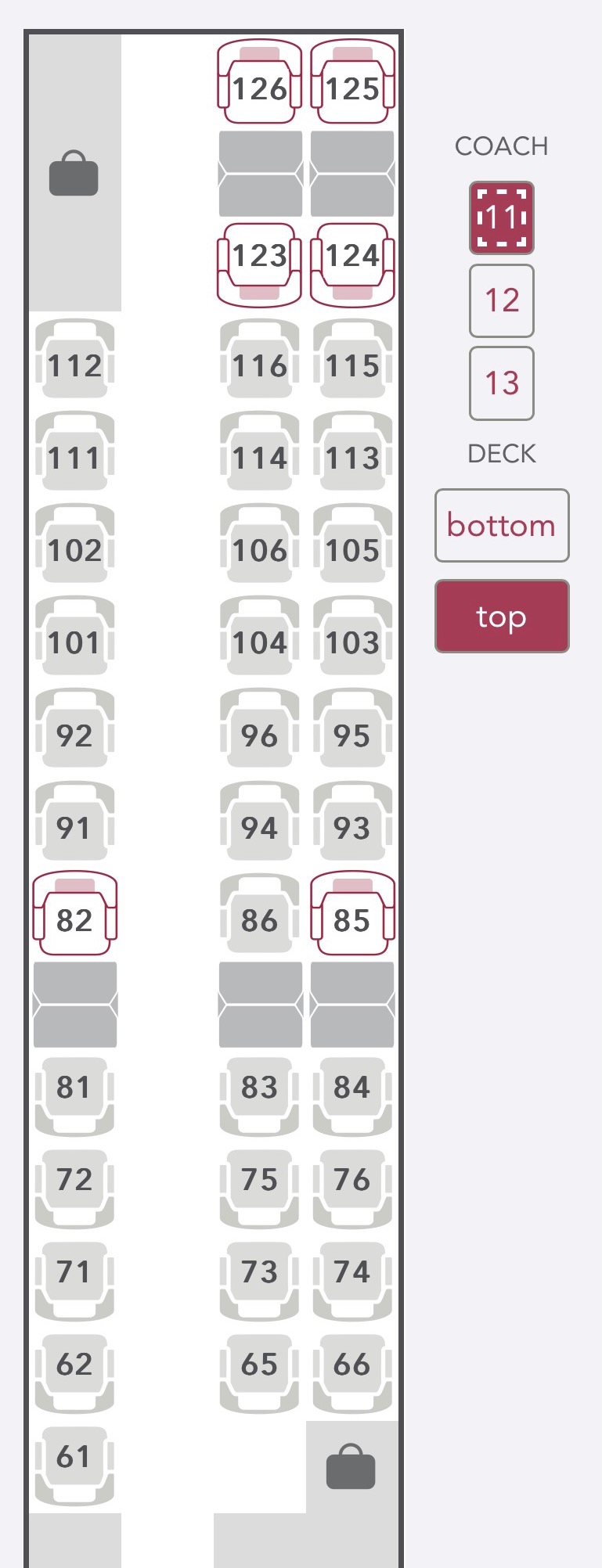
Seats in first class are set up in a 2-1 configuration while economy class is set up in a 2-2 configuration which means slightly wider seats in first class, though not by much since the aisles are also wider.
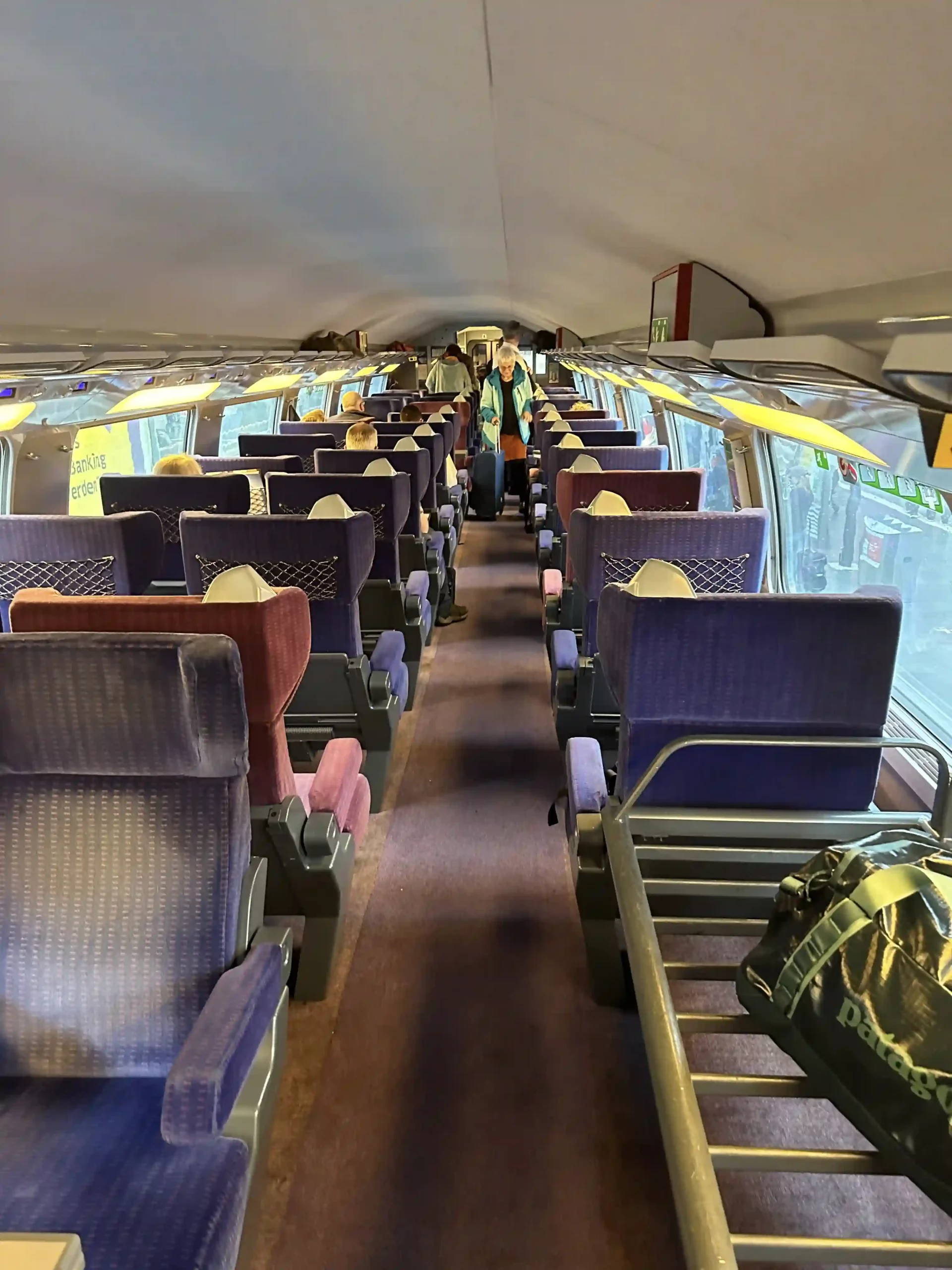
There is ample leg room, a double armrest so that you don’t have to share with your neighbor if you have one, and good padding on these blue and purple fabric seats.
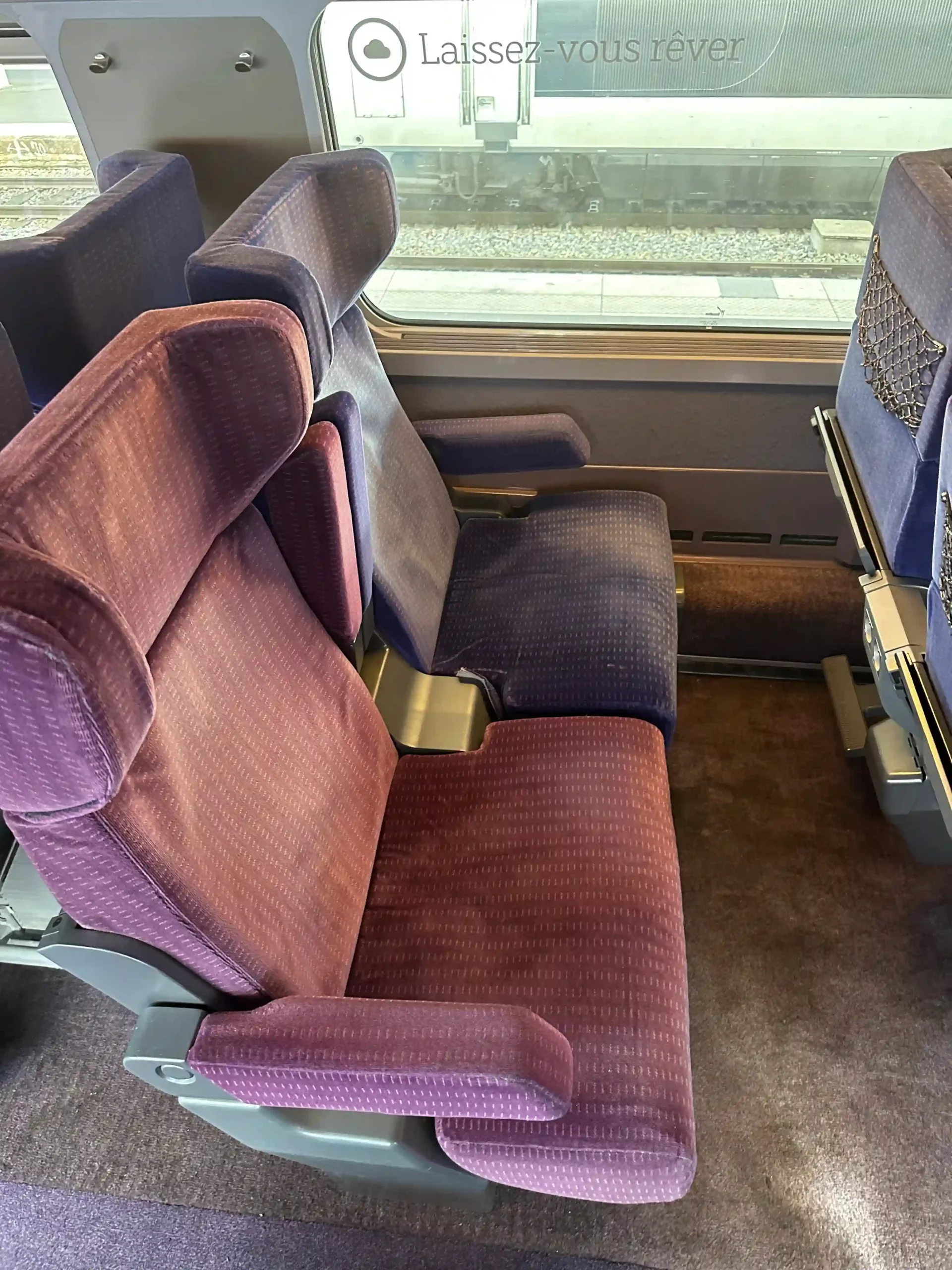
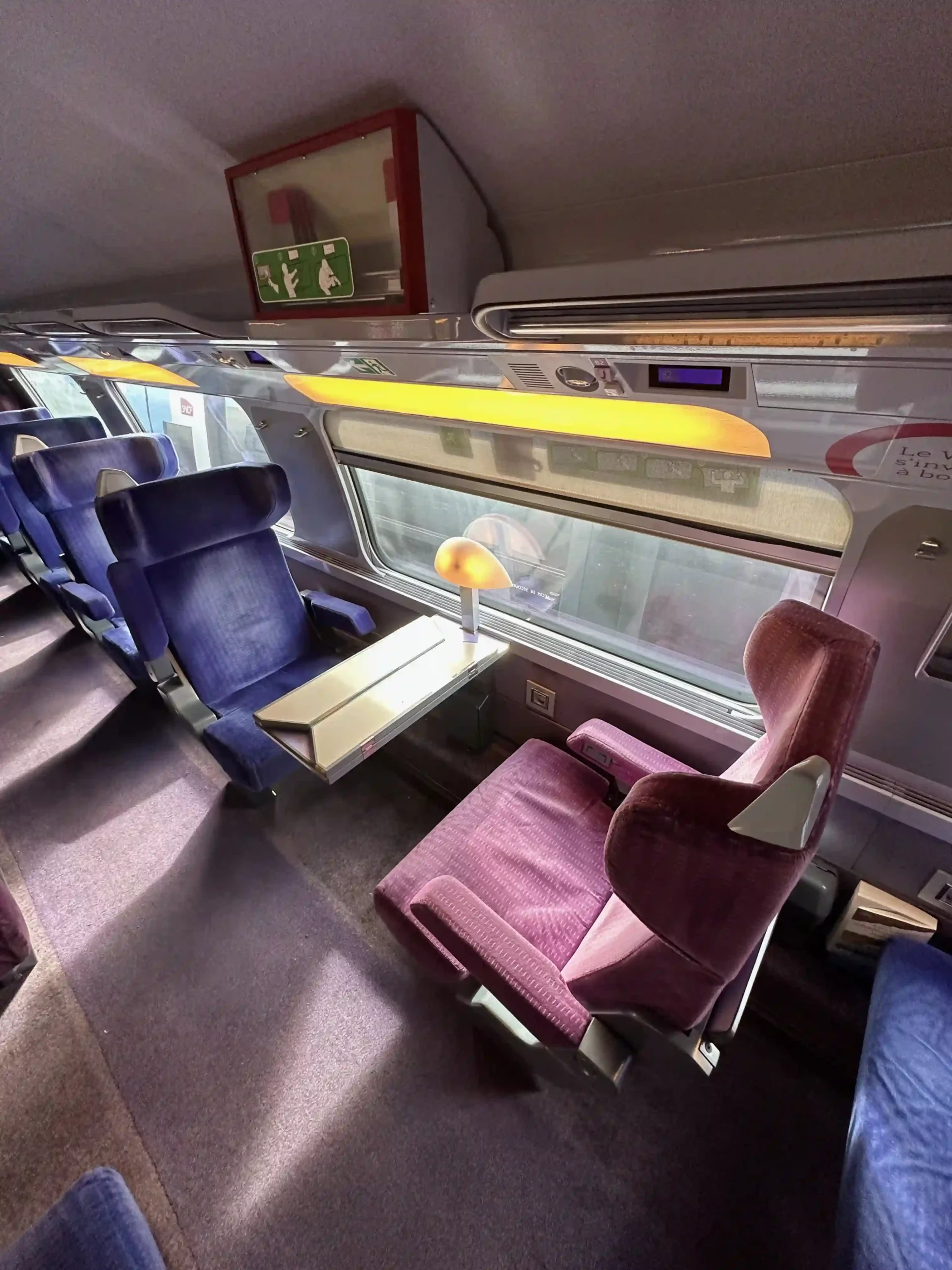
The seats can be electronically reclined a comfortable three inches by pushing a recline button on the armrest.
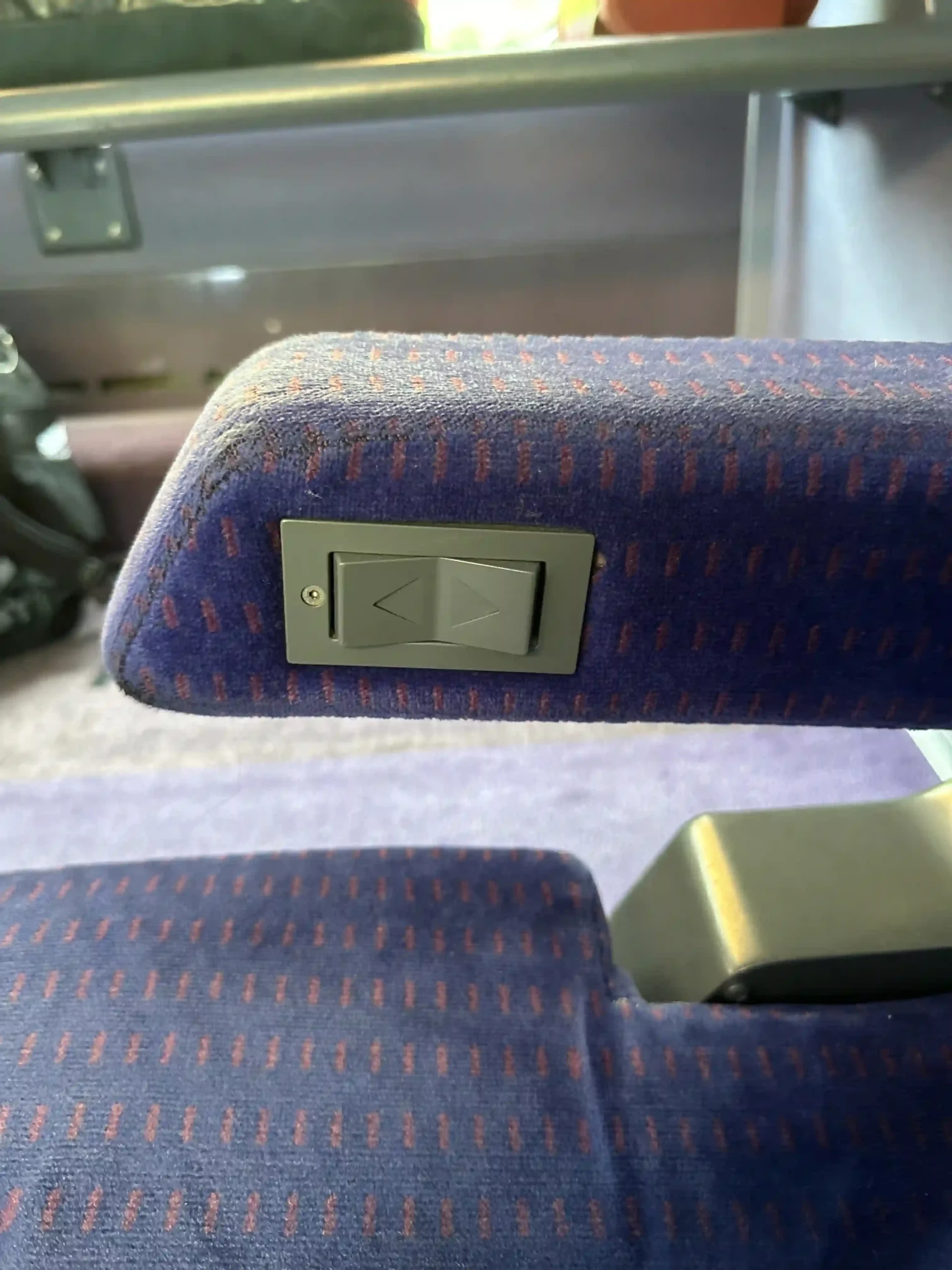
Each seat in first class comes with a European 220-volt electrical socket. You’ll also get a socket in second class, but there’s only one for every two seats.
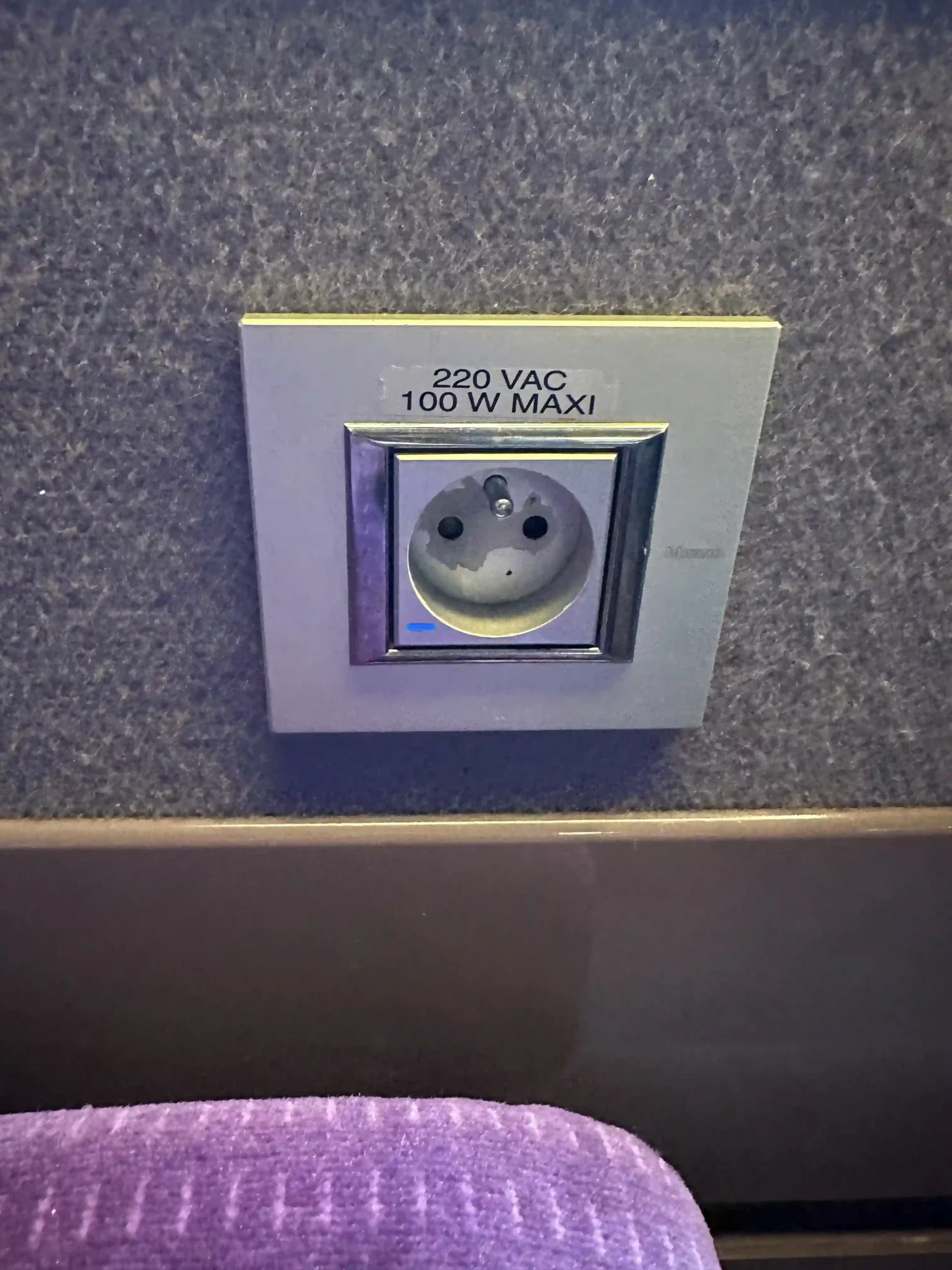
Each seat also comes with either a large seat back table or, if you’re seated in the set of four seats, a central, shared table.
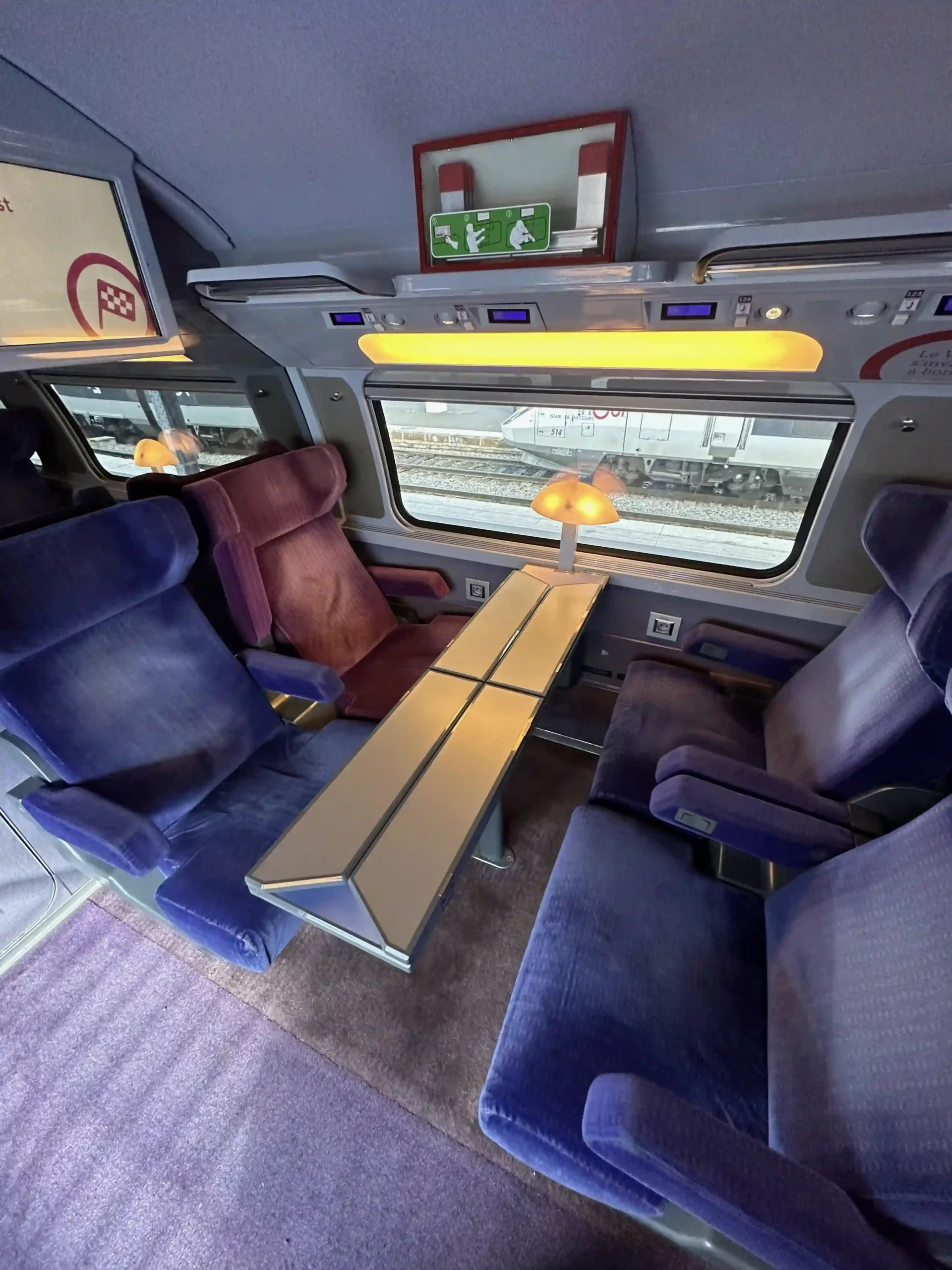
There are numerous seating options, including standard single seats and pairs of seats, both forward- and rear-facing.
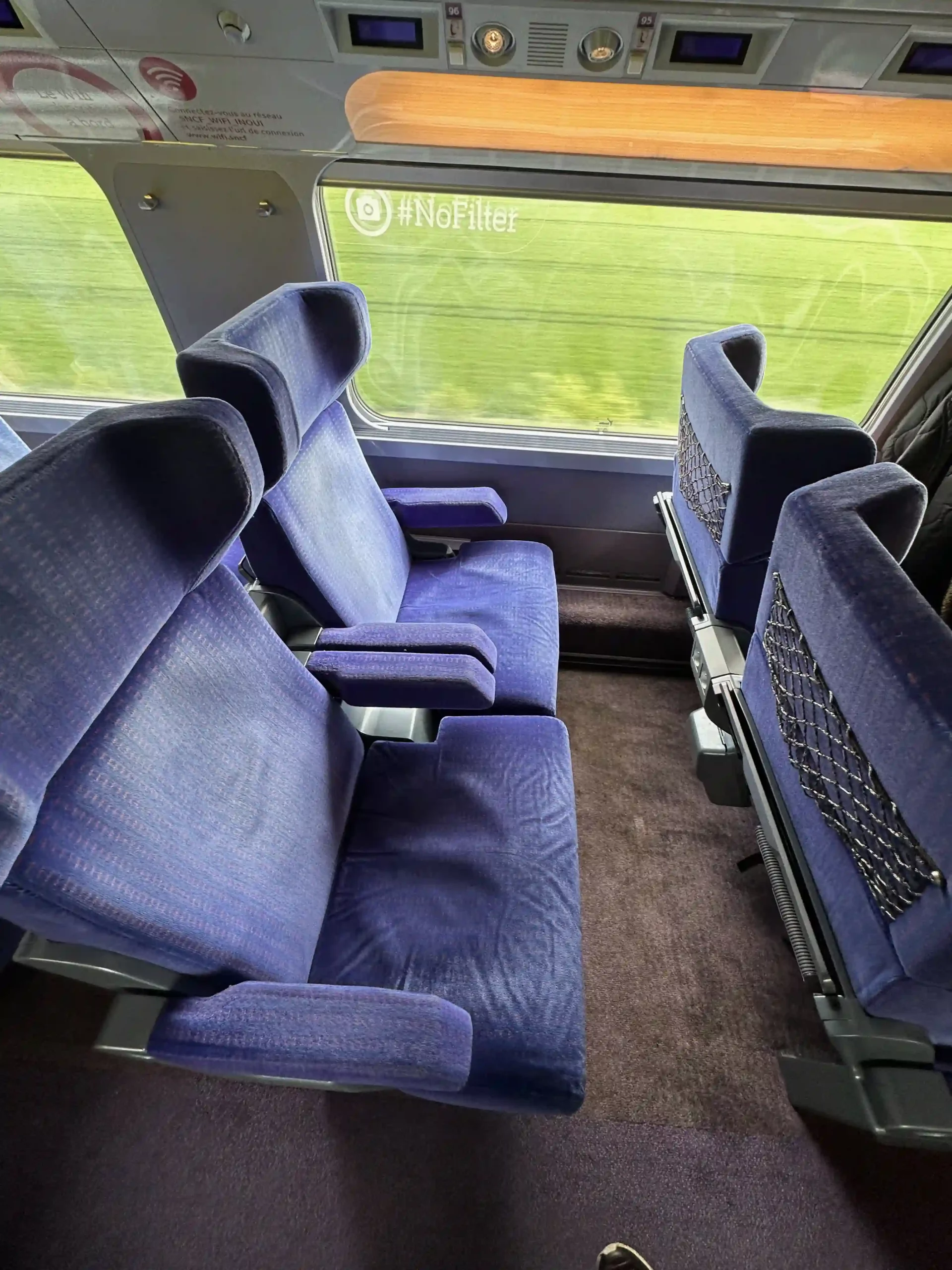
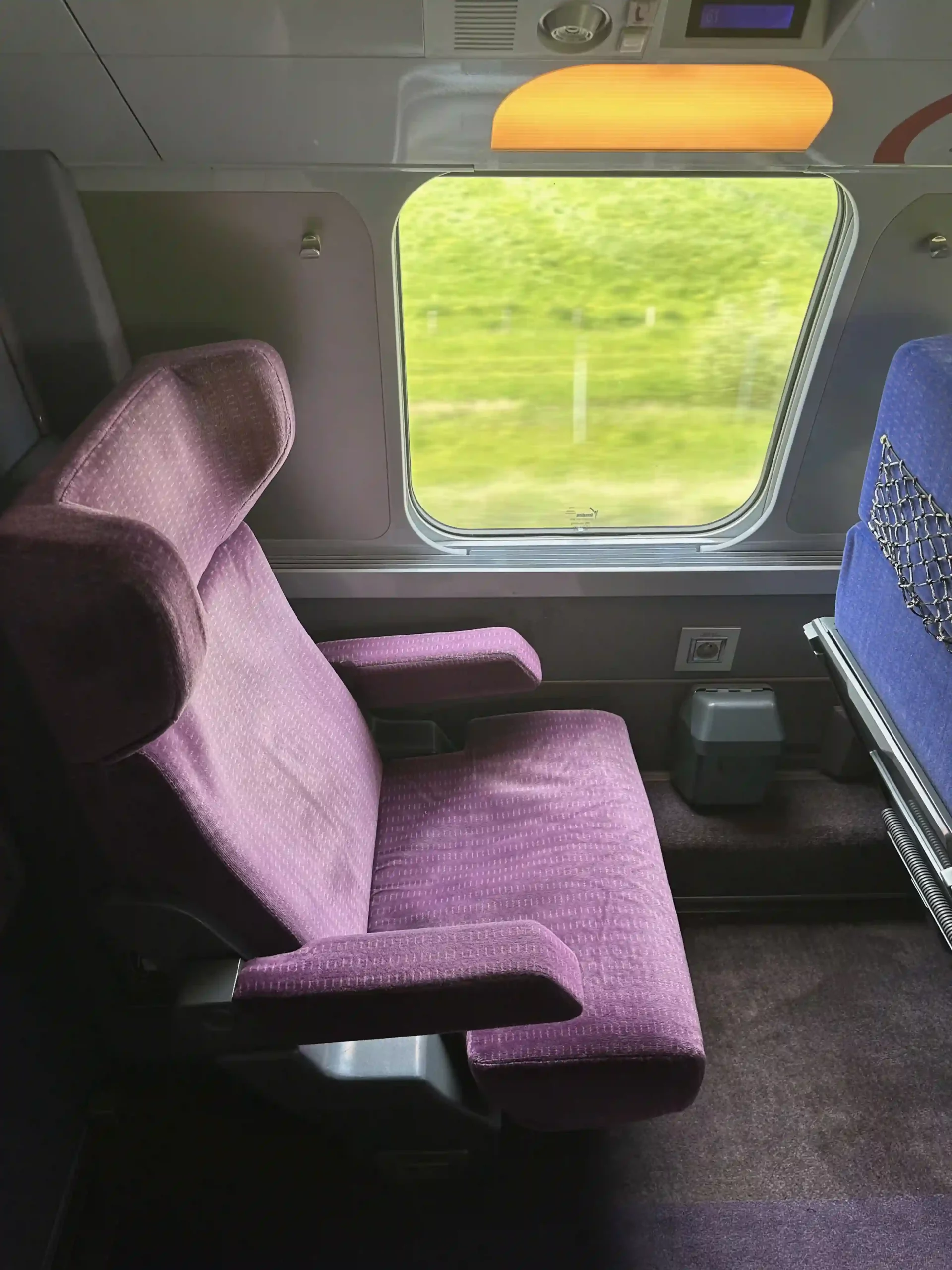
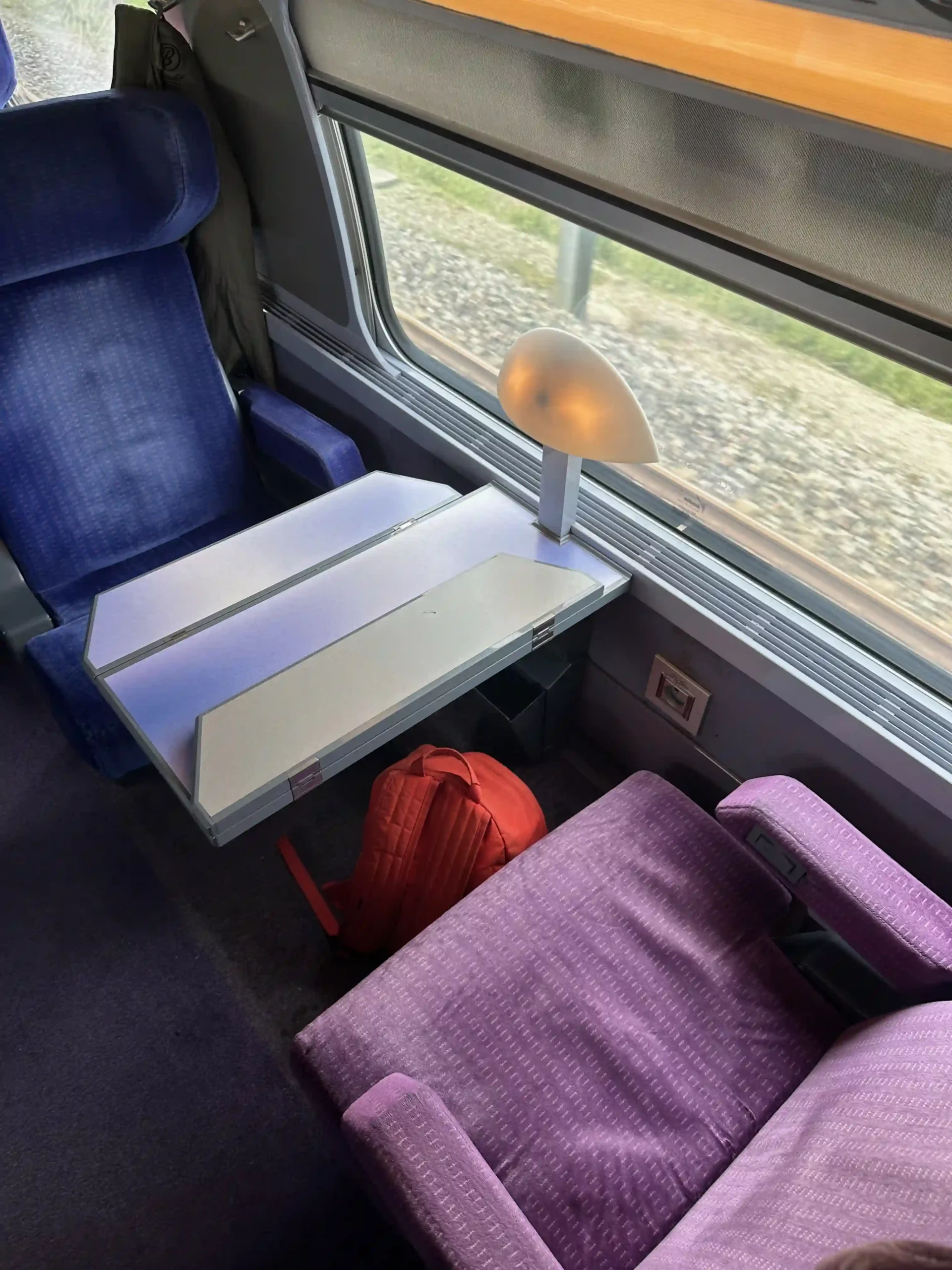
I was originally seated in seat 116 in carriage 11, the window seat on the side of the car with two seats. I ended up moving to seat 126, which was part of a completely unoccupied set of four seats and a shared table with a lamp.
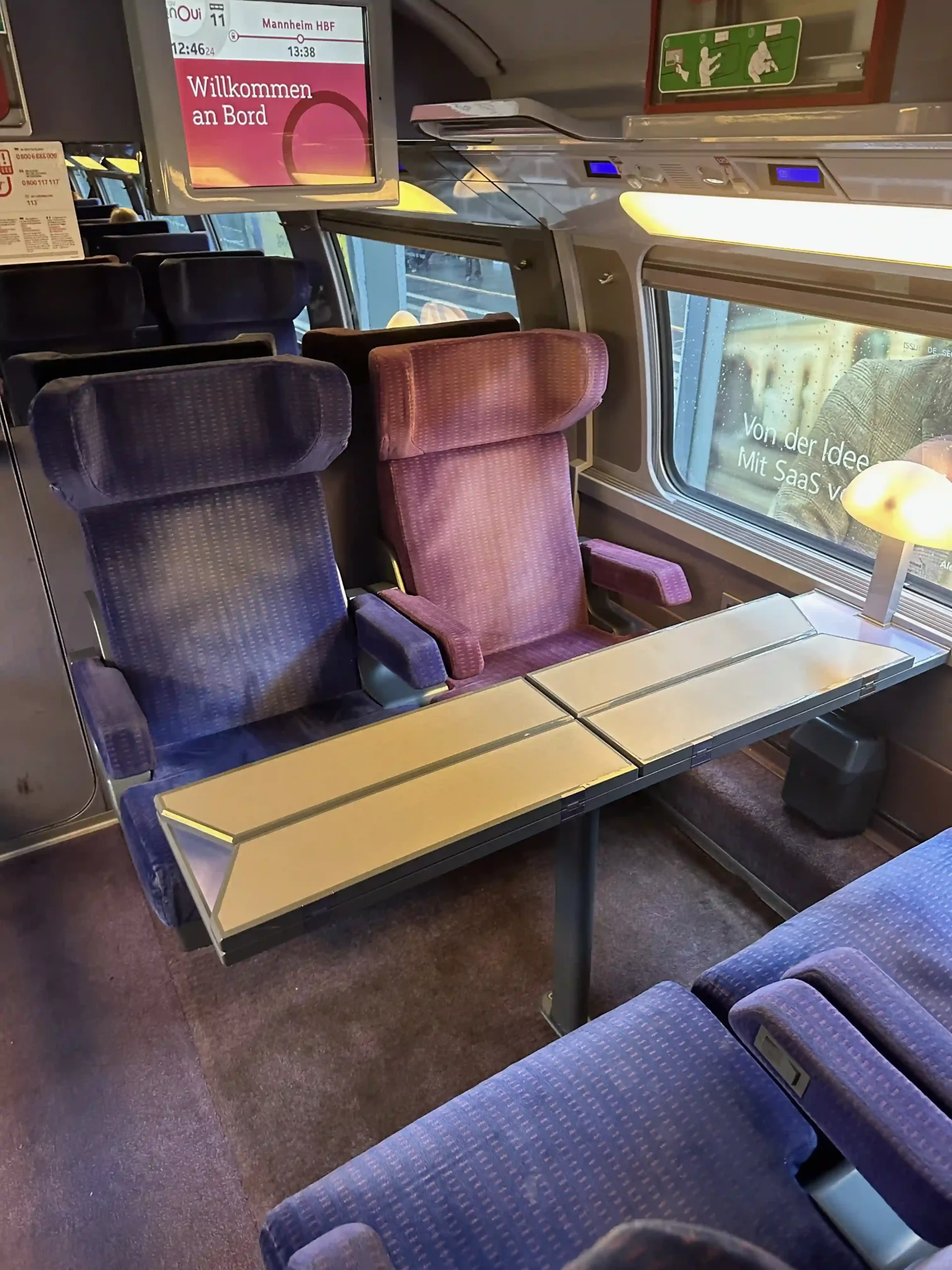
Each seat also had its own overhead reading light.
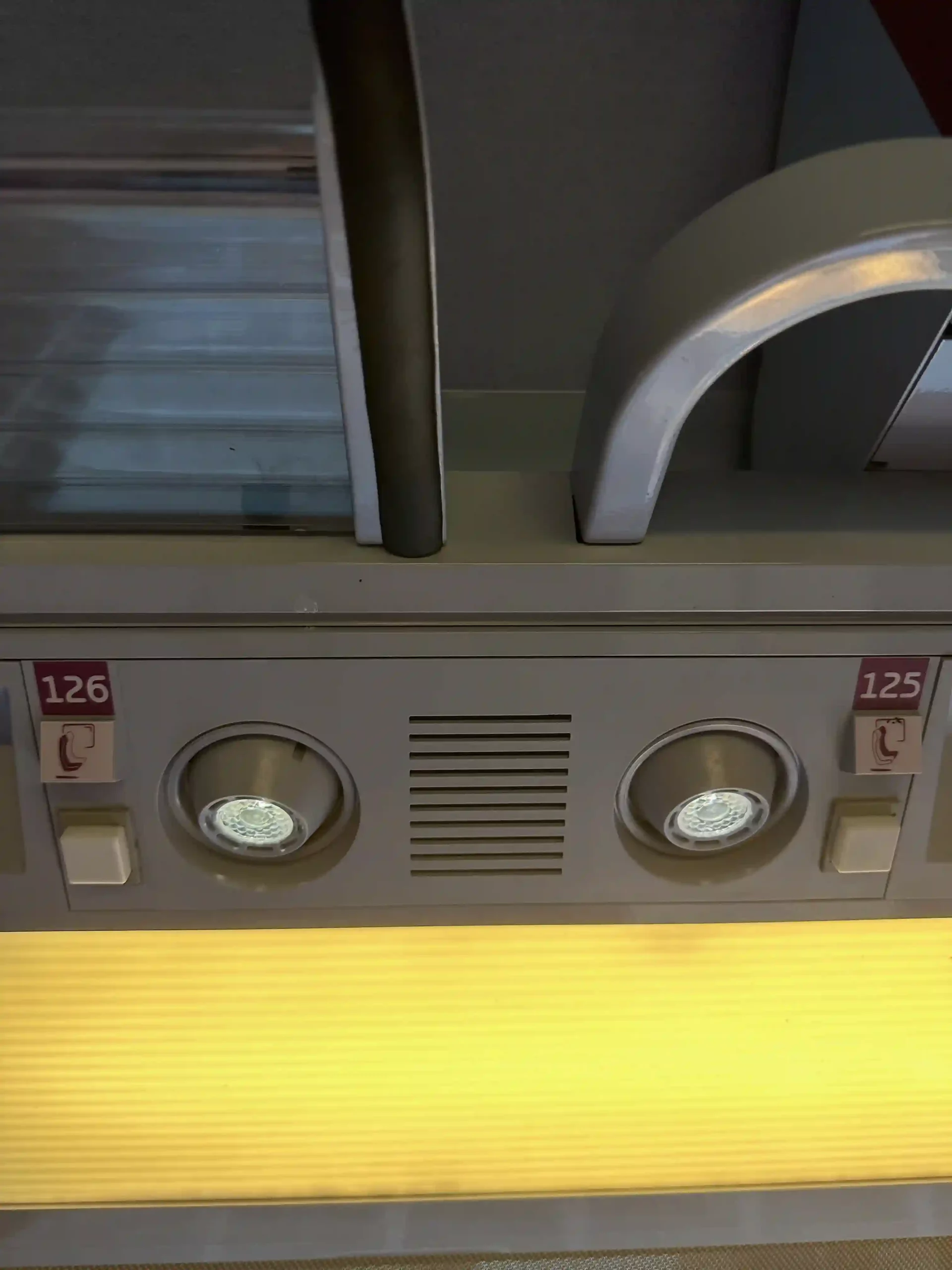
Though the seats were comfortable and spacious, I didn’t like the cabin aesthetic. My biggest issue is with the purple and blue fabric on the seats, which looks like carpeting you might find at a Chuck E. Cheese in the late ‘90s. The lighting is very dim and very yellow, which makes the cabin feel stuffy and slightly depressing. The carpets, aside from being a horrible purple color, were also fraying.
TGV bar car
In the middle of the train is a car with a bit of standing room, high tables, and a counter where passengers can order. Unfortunately, when I went looking for something sweet, I was told that they’d run out of all the pastries onboard sans a chocolate muffin that looked fossilized.
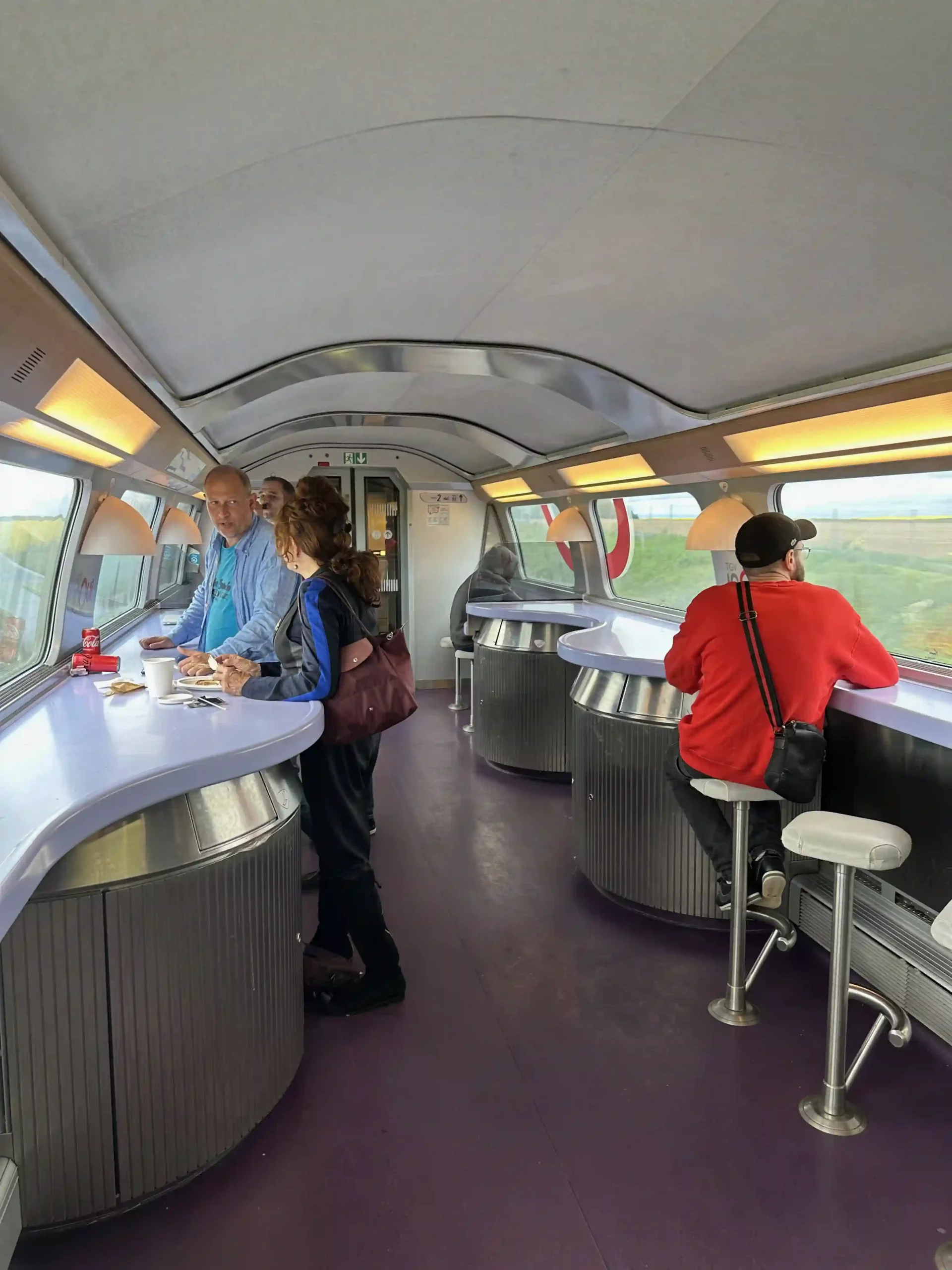
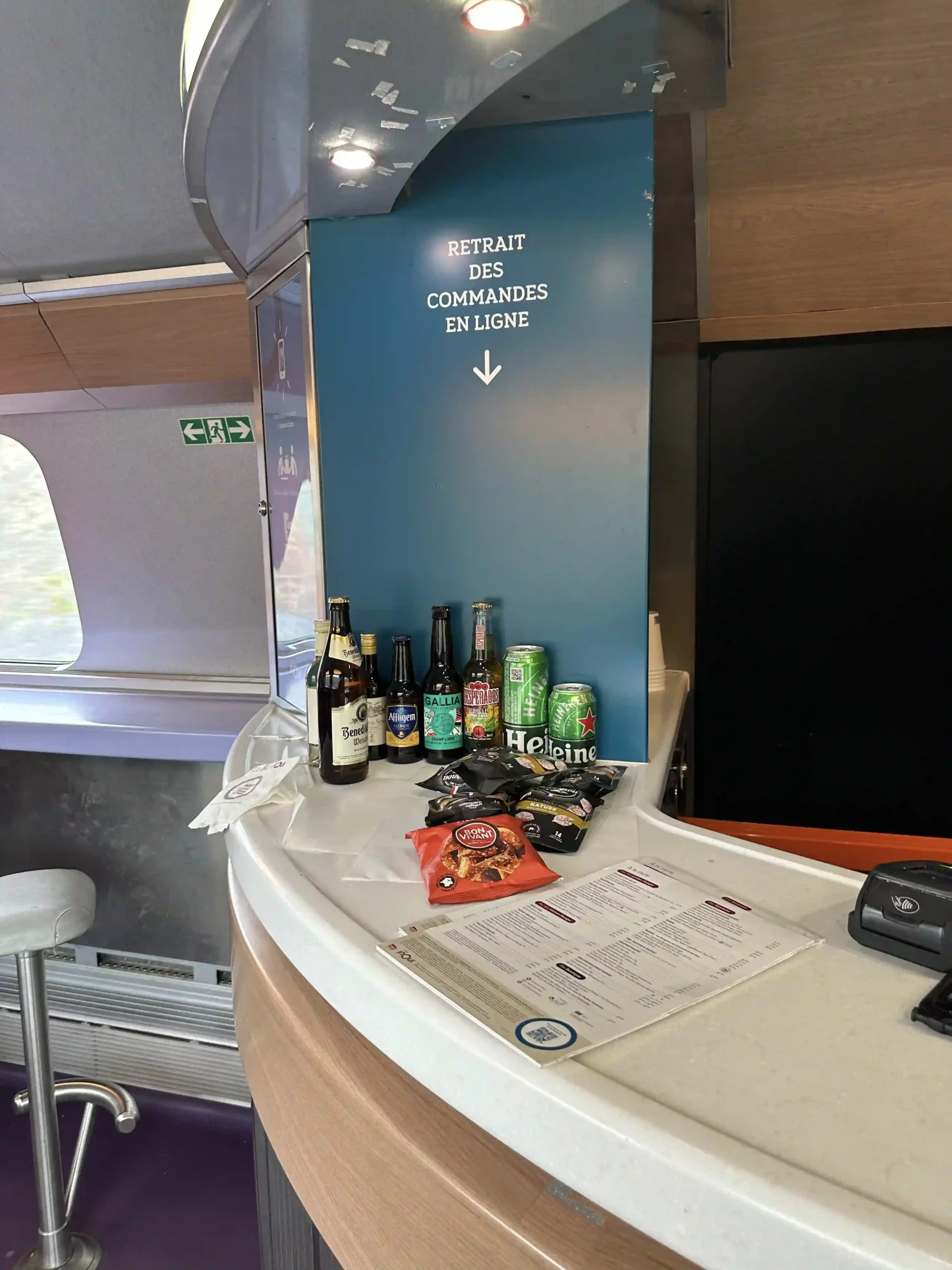
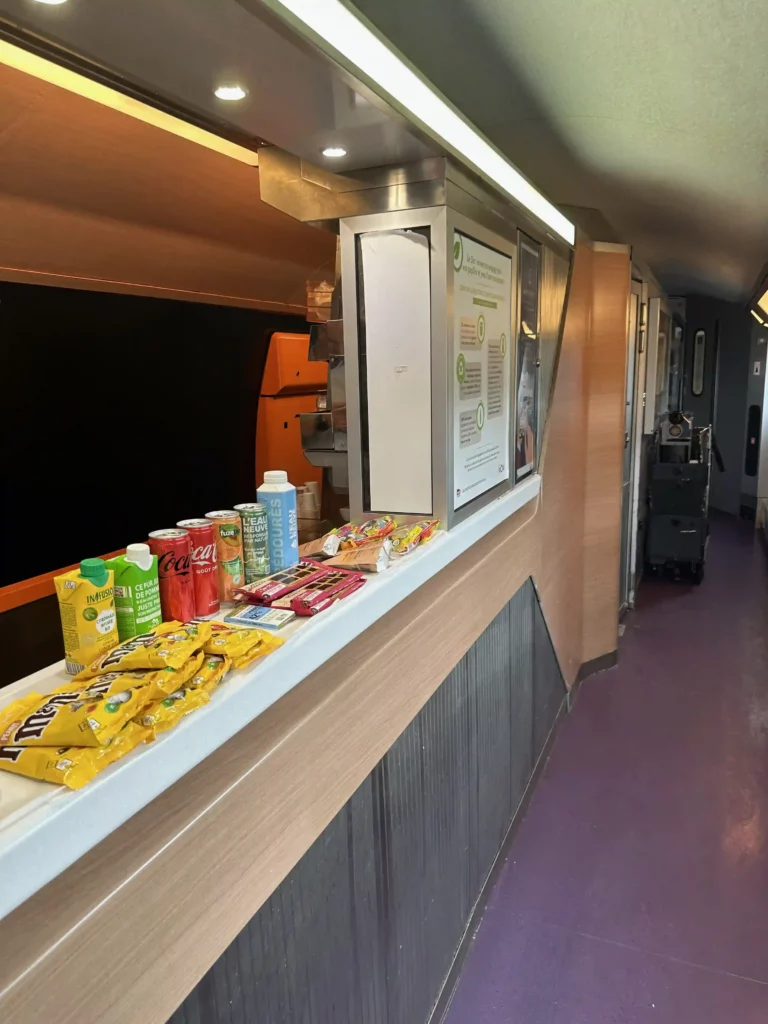
TGV food & drink
Food and drink menus were offered to first class passengers upon boarding. There were eight savory food items on offer, all of which except for two contained meat. The selection of sweet snacks and pastries, on the other hand, looked extensive. I was also pleasantly surprised by the fact that espresso drinks were served on board, given that Germany’s high-speed ICE trains often don’t have them.
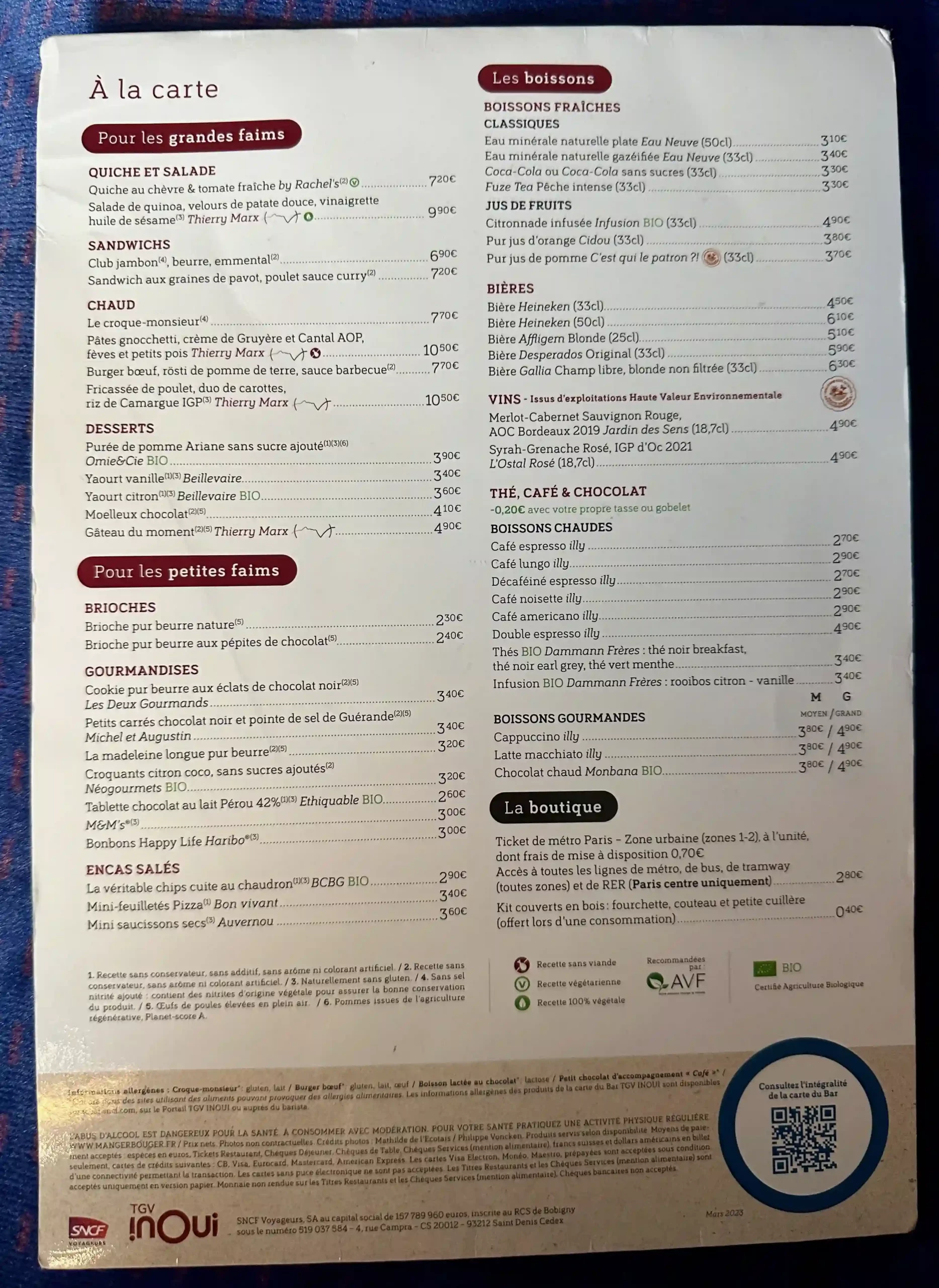
On the other side of the menu were several reasonably priced combo meals.
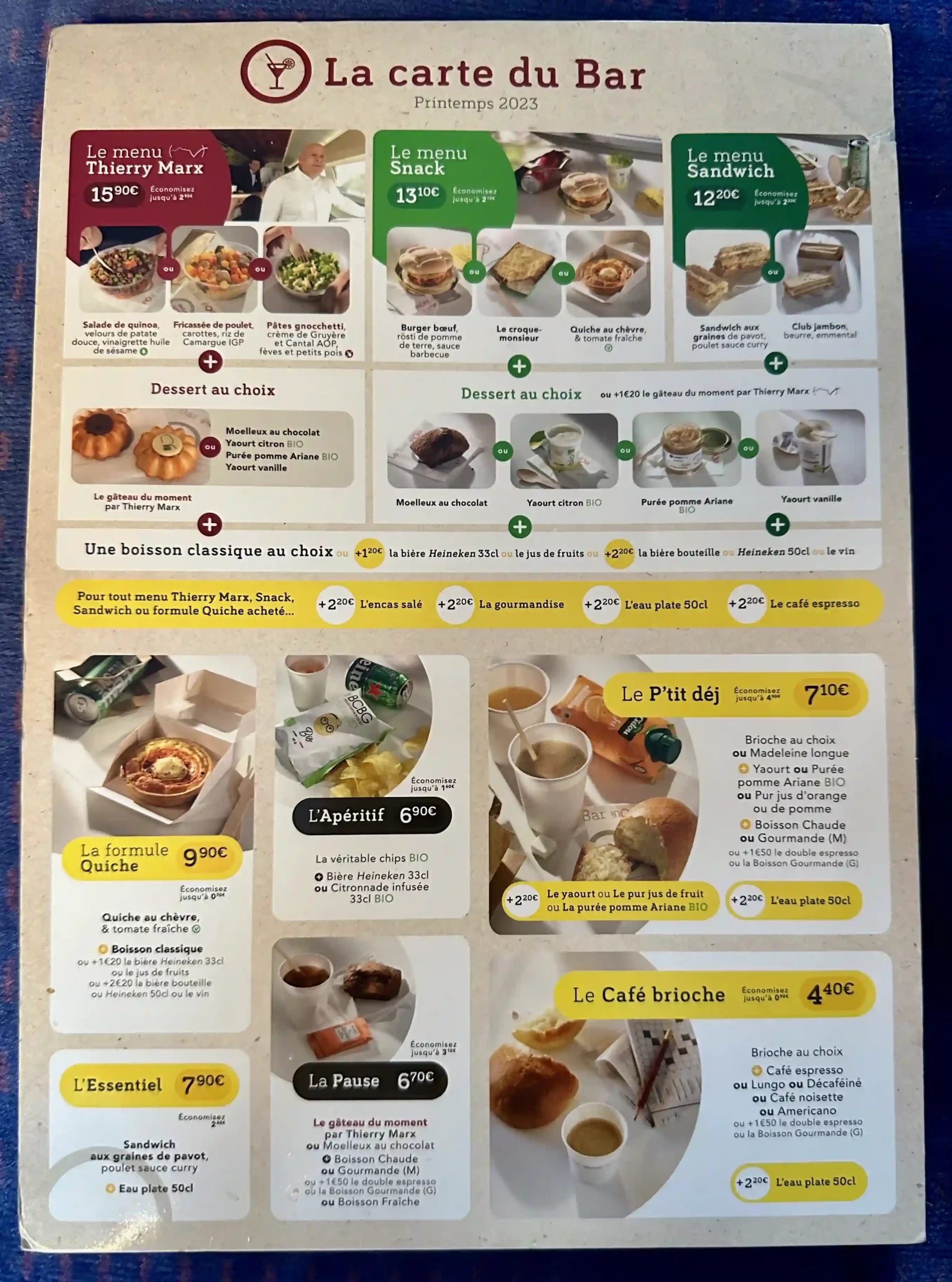
Passengers can order food in the dining car, but one of the only benefits of first class besides the additional space is that you can also order food directly to your seat. The first class attendant came through the cabin with a trolley several times but, having had lunch shortly before the trip, I didn’t order anything.
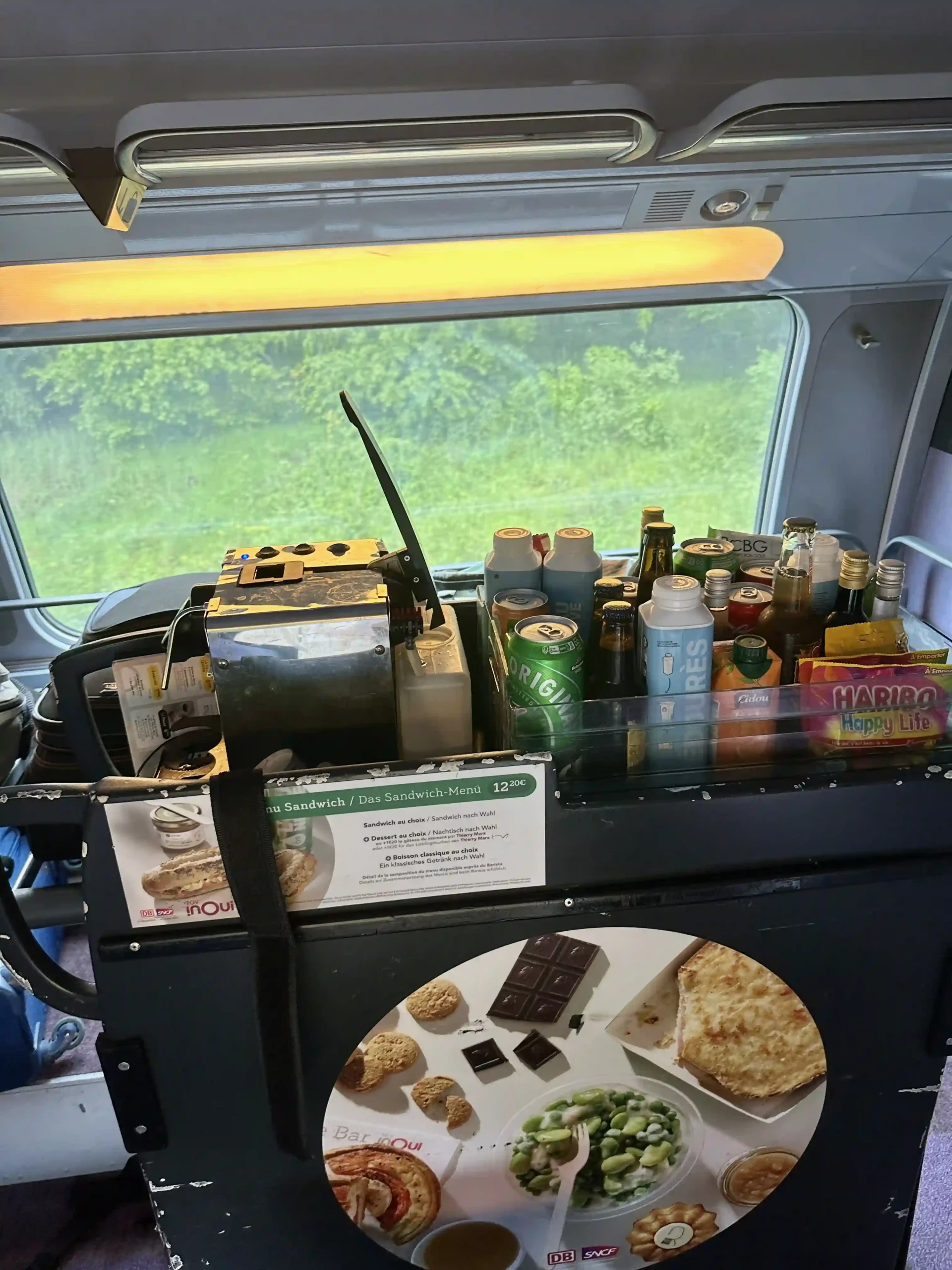
TGV free Wi-Fi
The onboard Wi-Fi was very poor. The highest download speed I got was 3 Mbps, but for about 70% of the journey, there was no connectivity at all.
TGV first class lavatories
There were six lavatories between the three first class carriages, one on each floor. They were cramped but well-maintained.
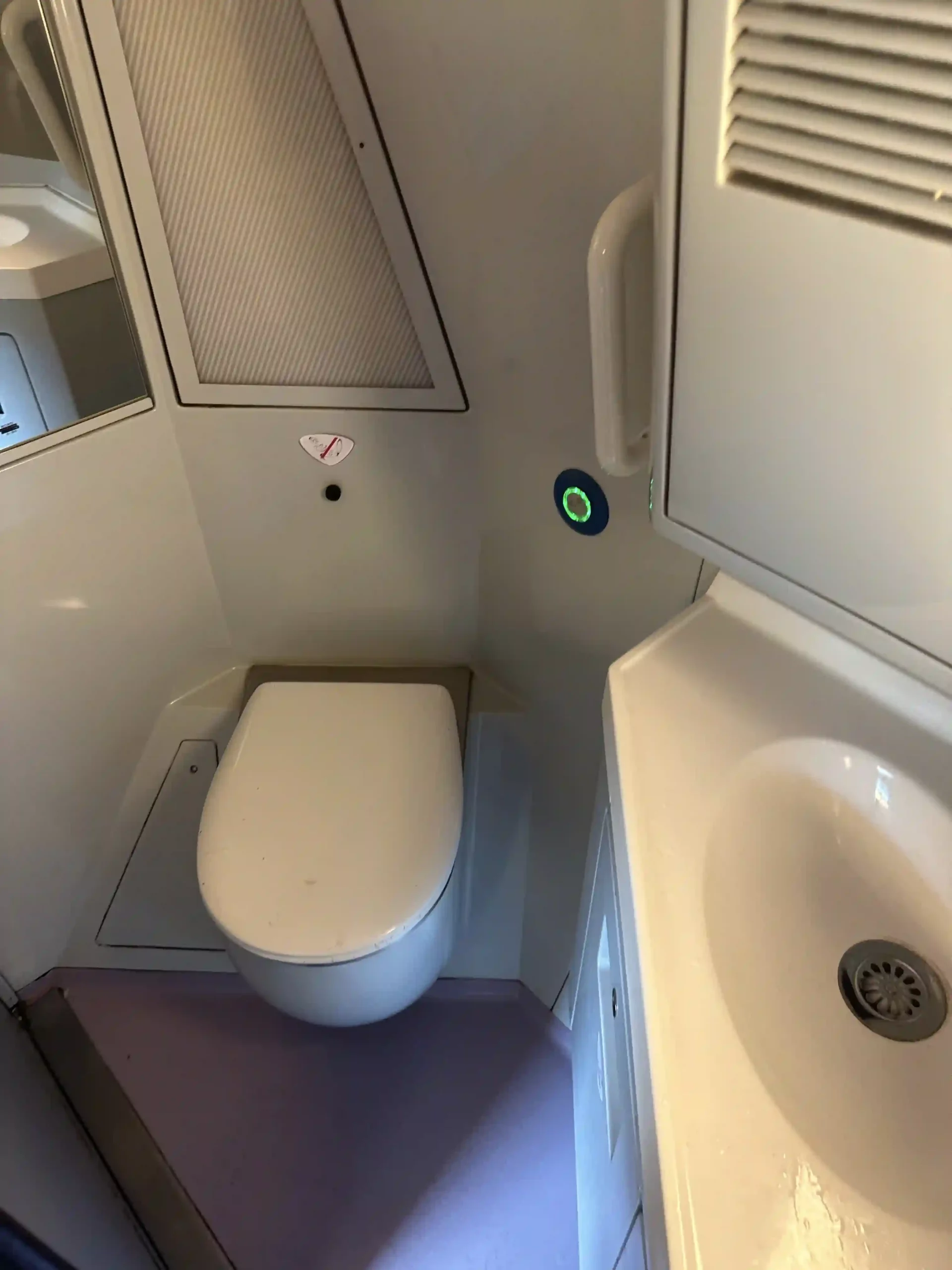
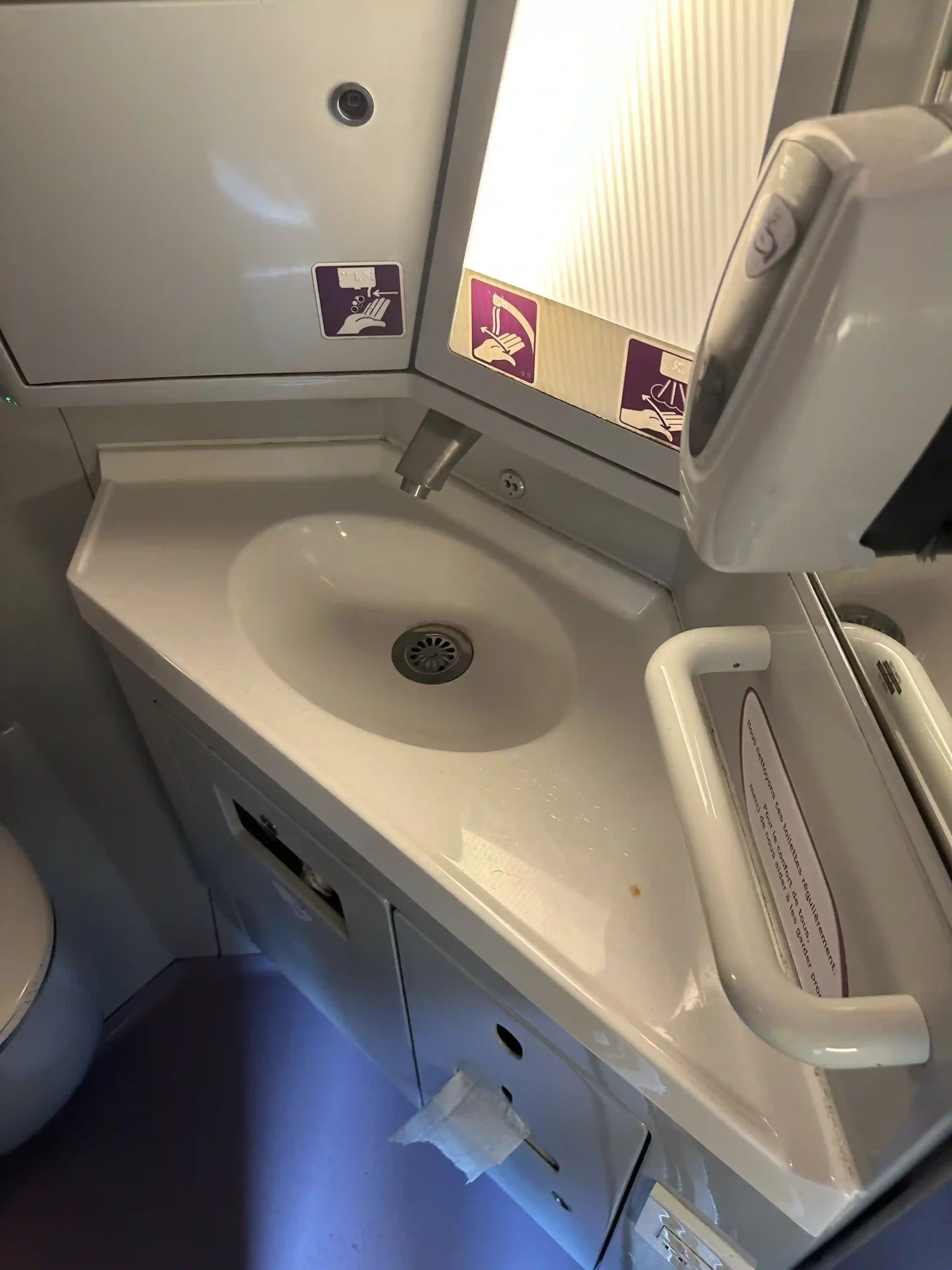
TGV first class service
Beyond cabin attendants periodically moving through the cabin with a refreshments cart, there wasn’t much service to speak of.
Cabin cleanliness (or lack thereof)
My single biggest complaint with this trip was a filthy cabin. I didn’t take a look at the second class area, but throughout the first class cabin, carpets and seats were stained and bits of trash littered the floor. Beneath my table were several half-eaten pieces of fruit and next to my seat, beside the armrest, was a mess of chocolate wrappers, crumbs, dust, and hair. At one point, my AirPods case fell down the side of my seat and when I picked it back up was covered in dirt. Pretty gross.
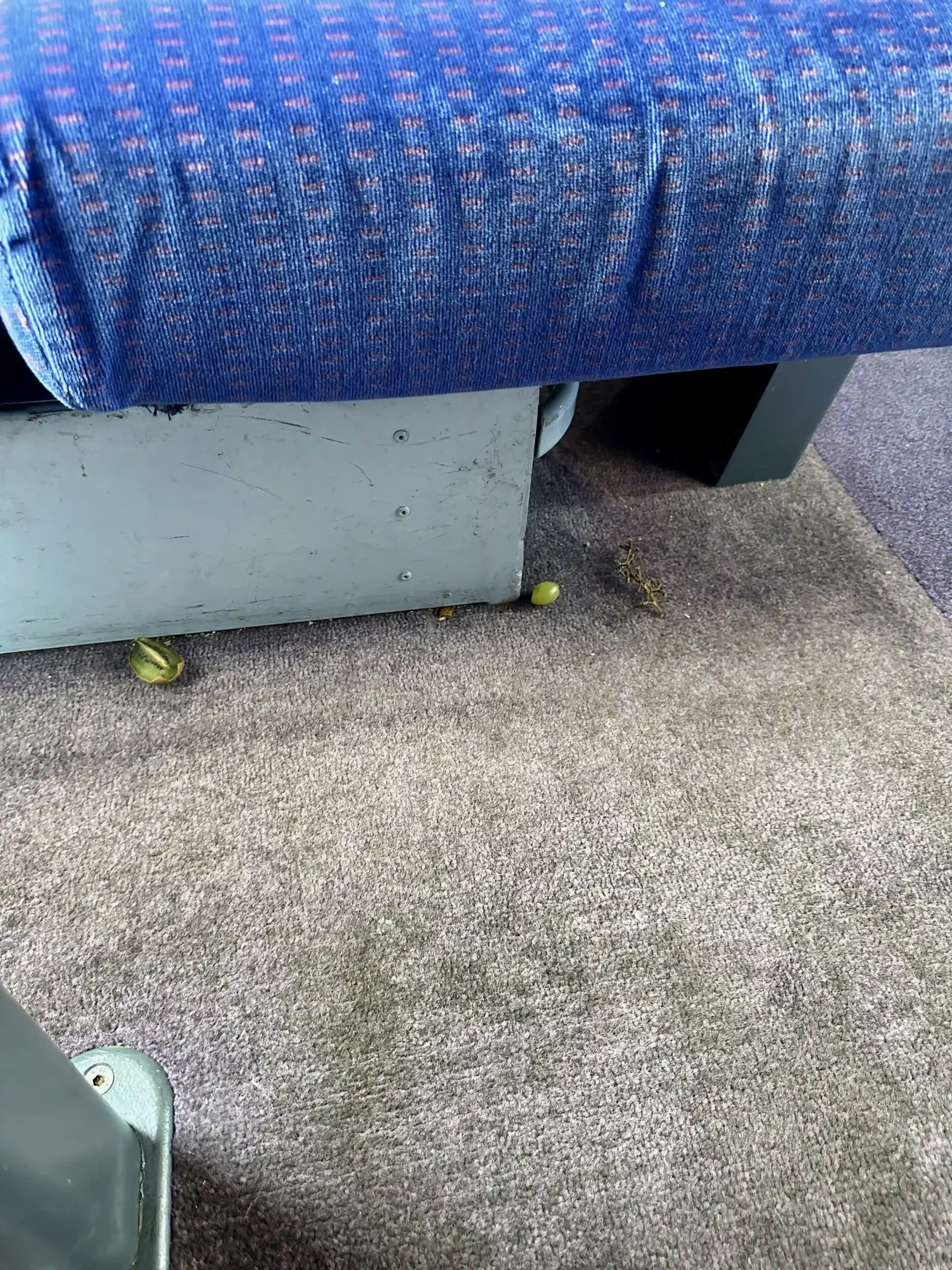
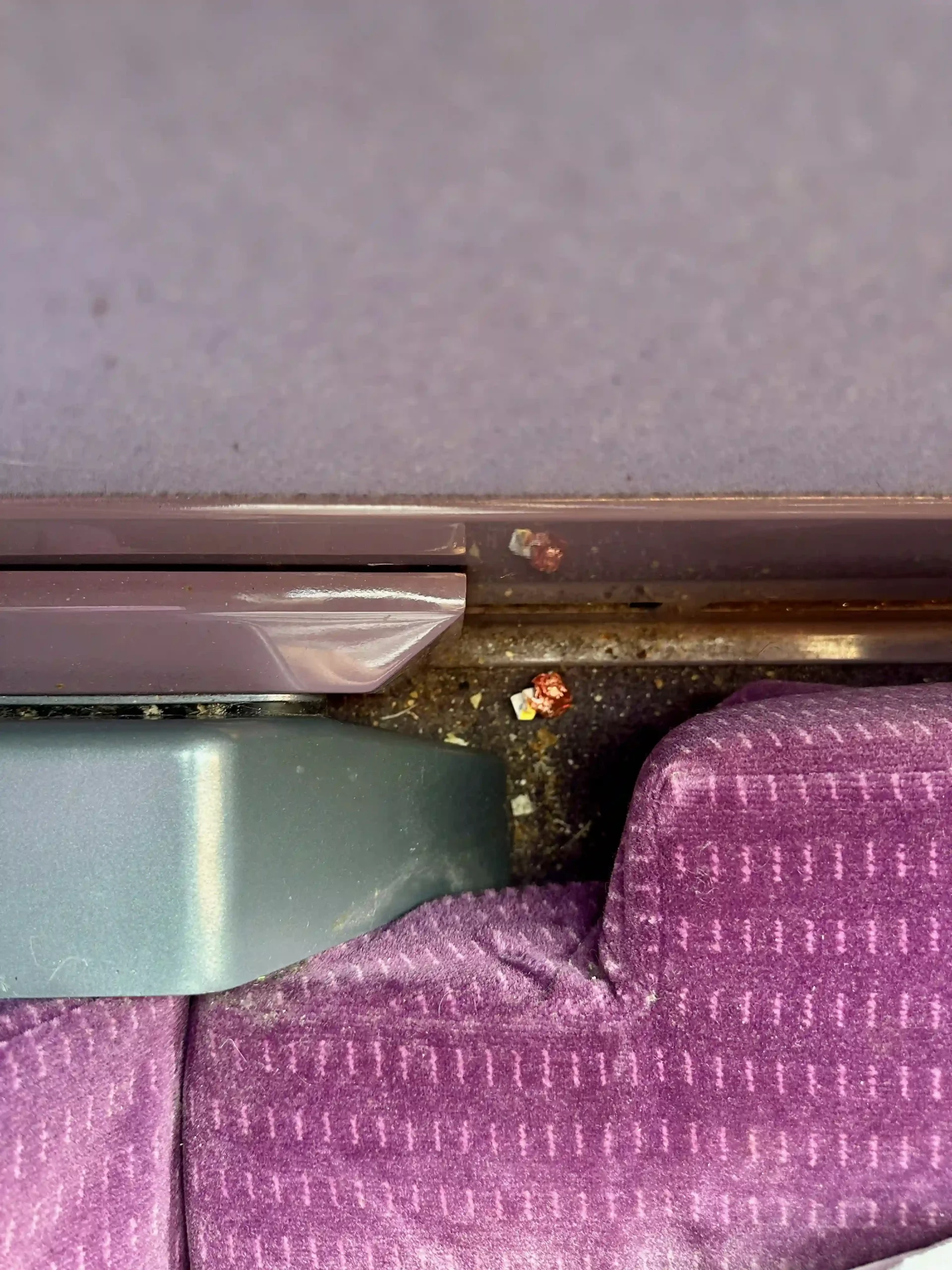
Arrival in Paris
My favorite part of the journey is the last leg, between Saarbrucken and Paris, where the track is rated for the highest speed. Our train hit its peak speed at just above 300 kph or about 190 mph. Along the way, I was treated to some screensaver-worthy views of the French and German countryside.
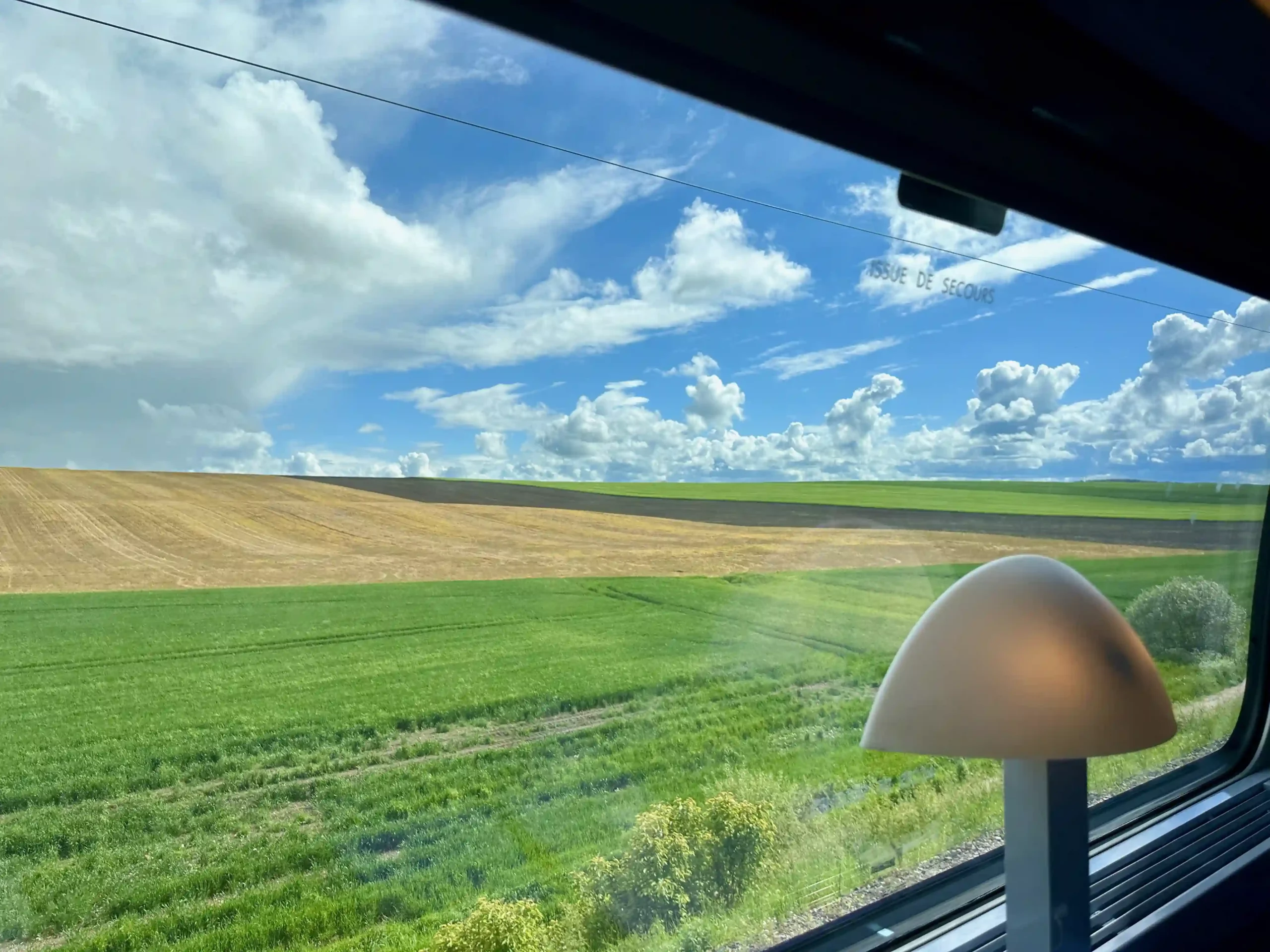
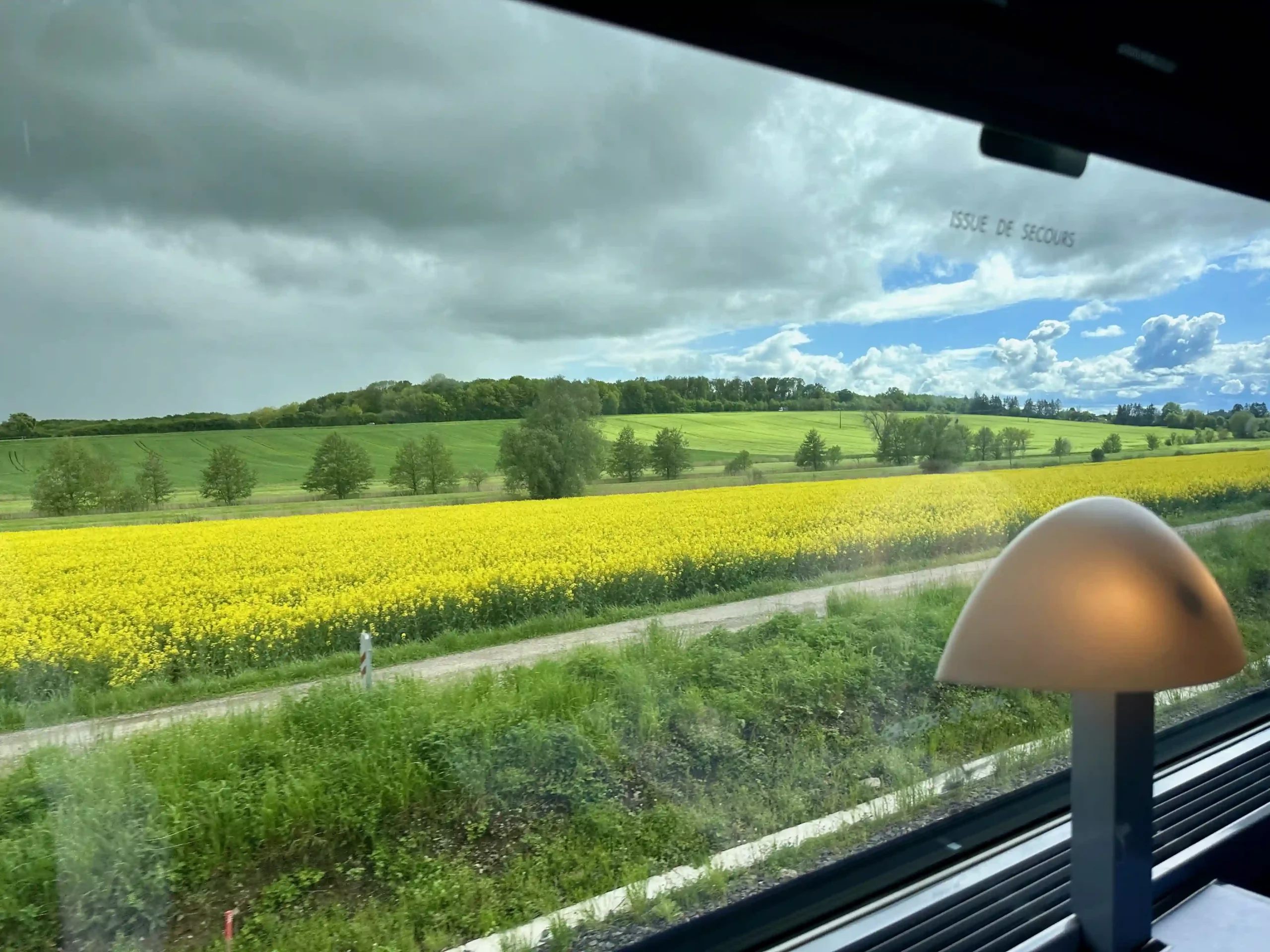
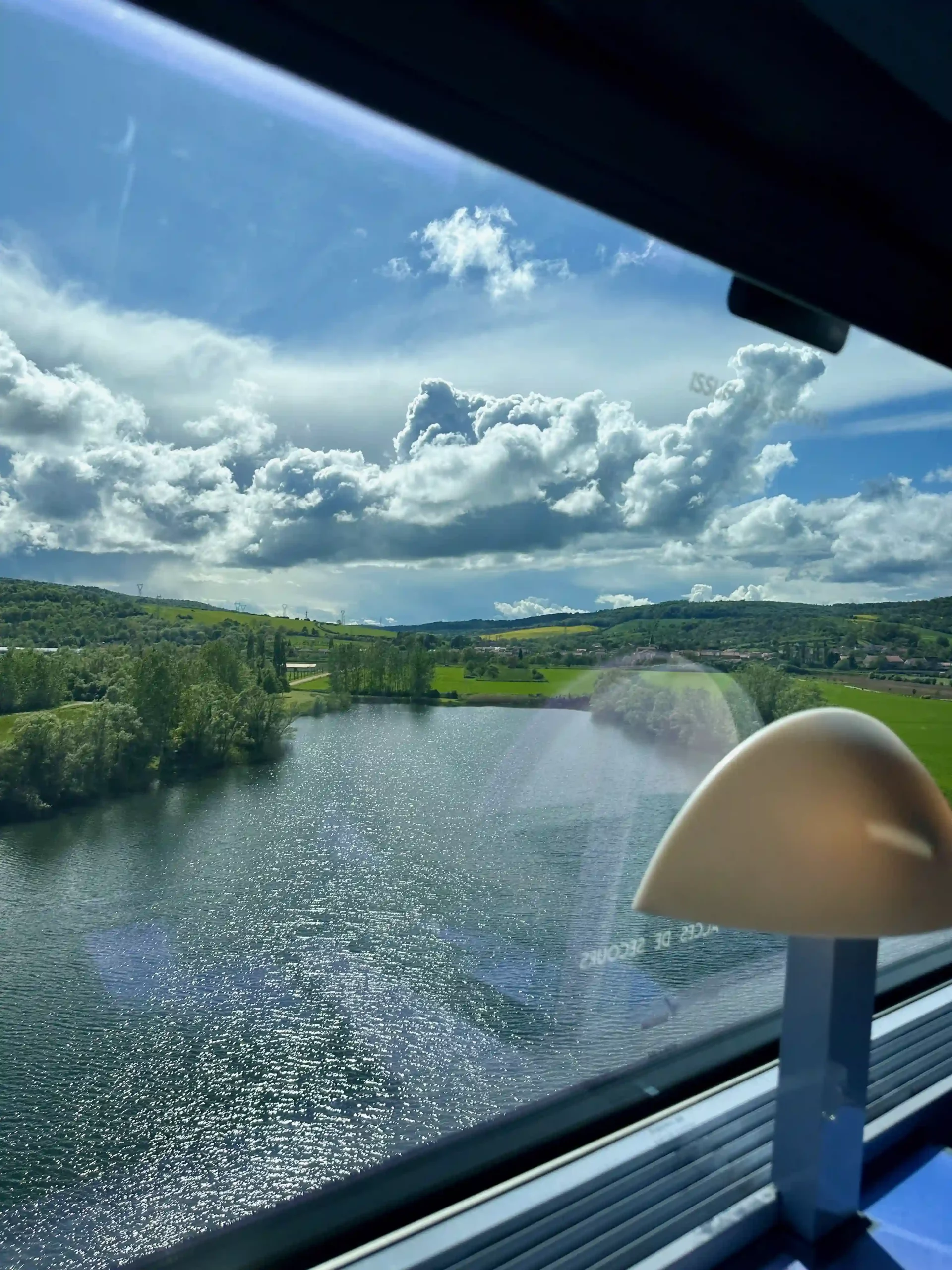
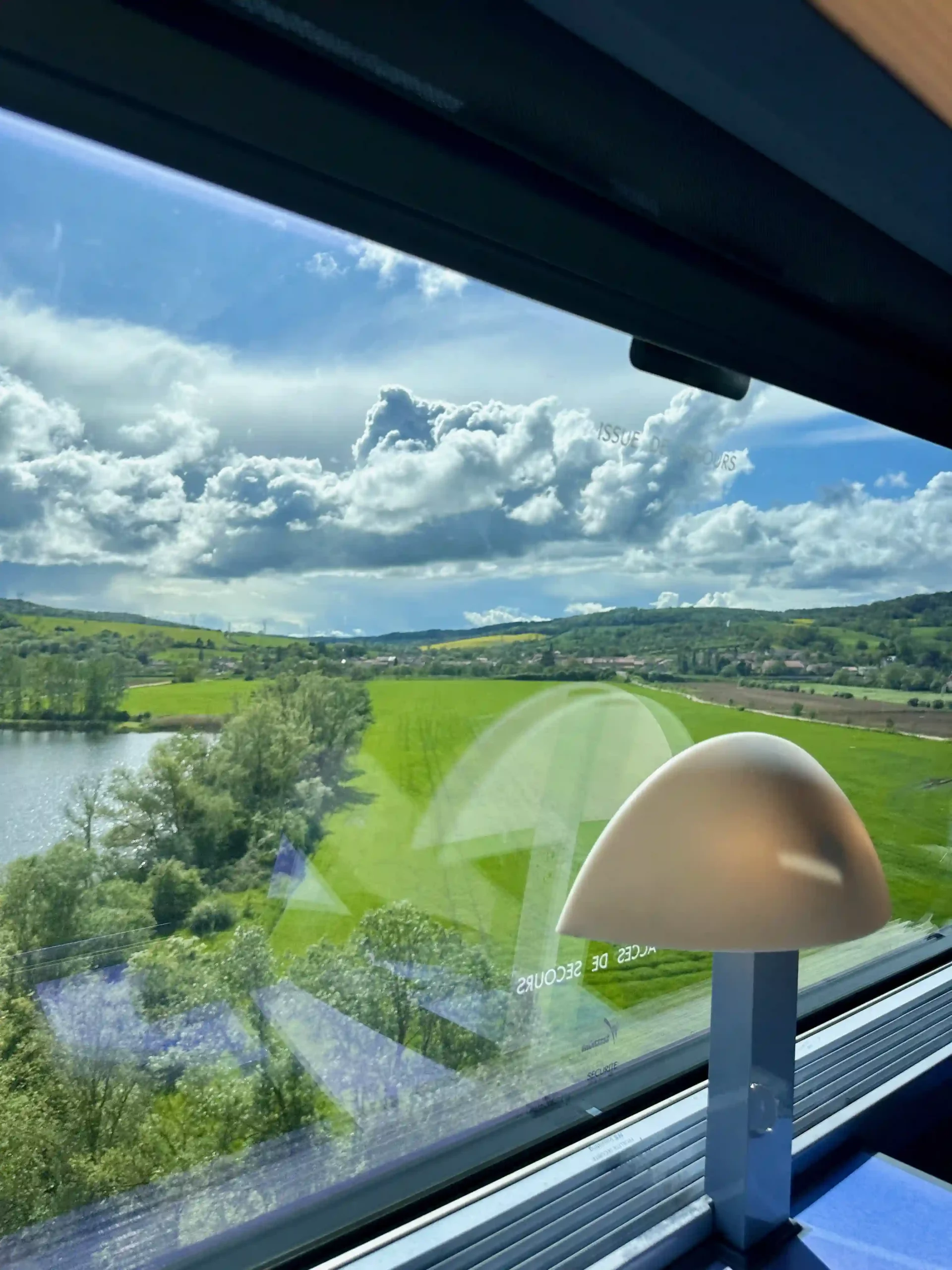
Due to a delay on the tracks just outside of Mannheim, we arrived at Paris Gare de l’Est station about 30 minutes late at 5:24 PM.
Conclusion
The trip had its ups and downs. While I enjoyed a comfy seat and stunning scenery, the Wi-Fi was extremely unreliable, the interior was unattractive and unclean, and the power outlets malfunctioned. Although it proved to be a more convenient option than flying, the experience just didn’t live up to the cost.
